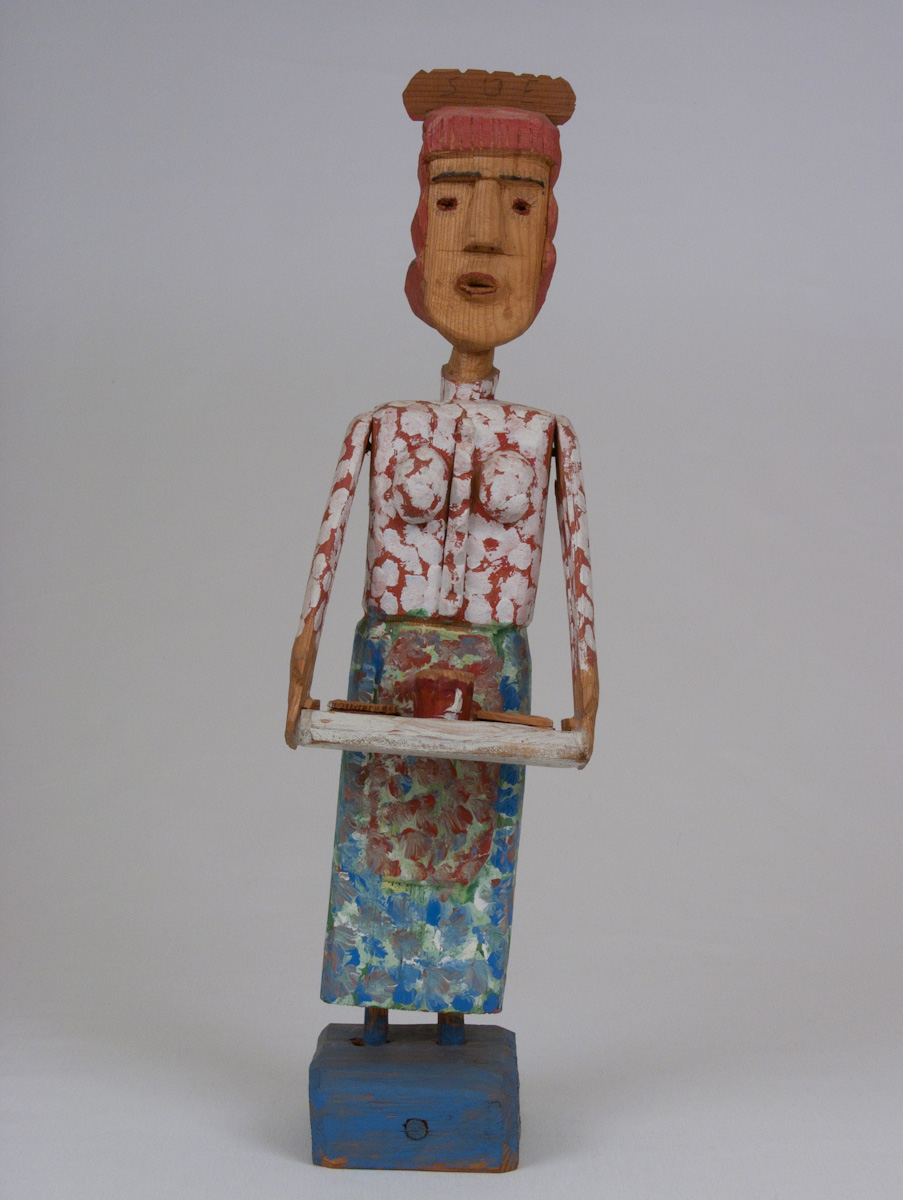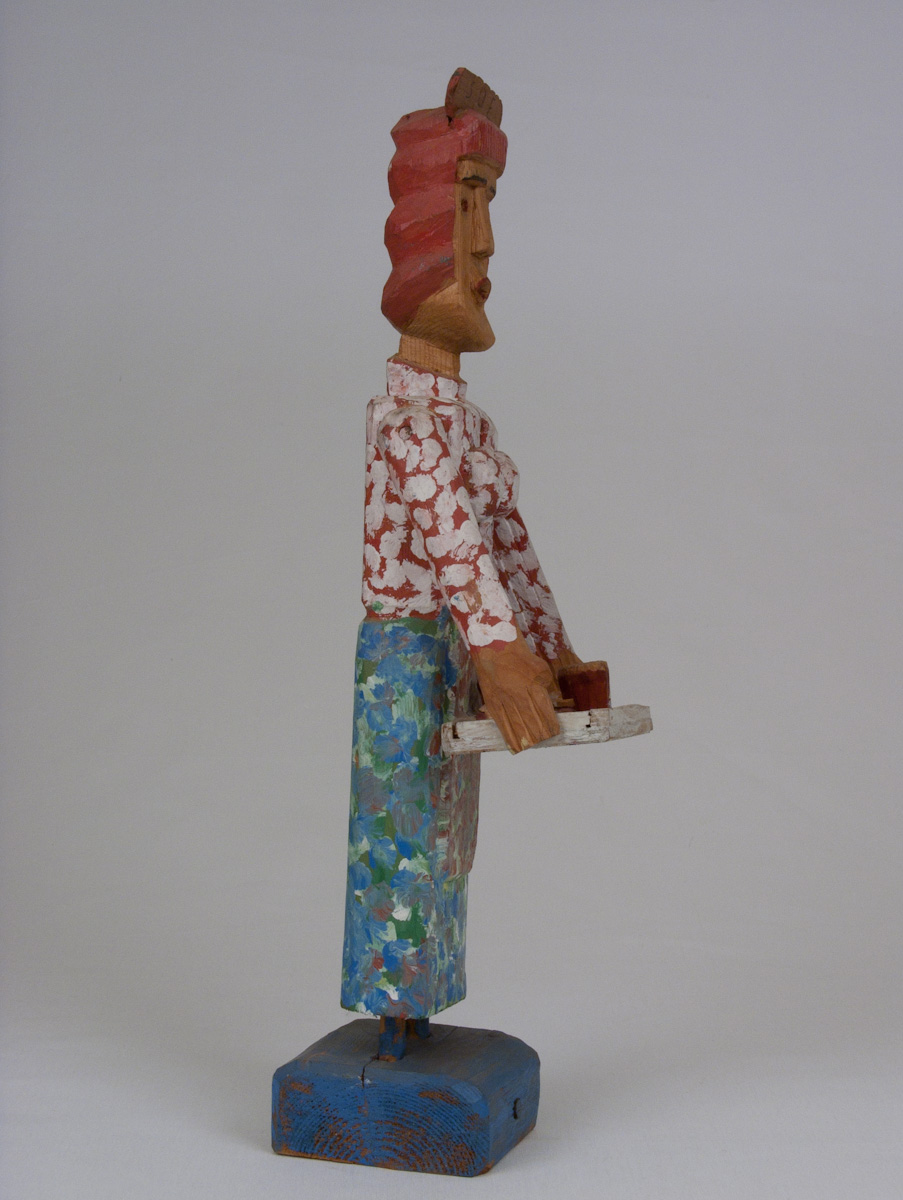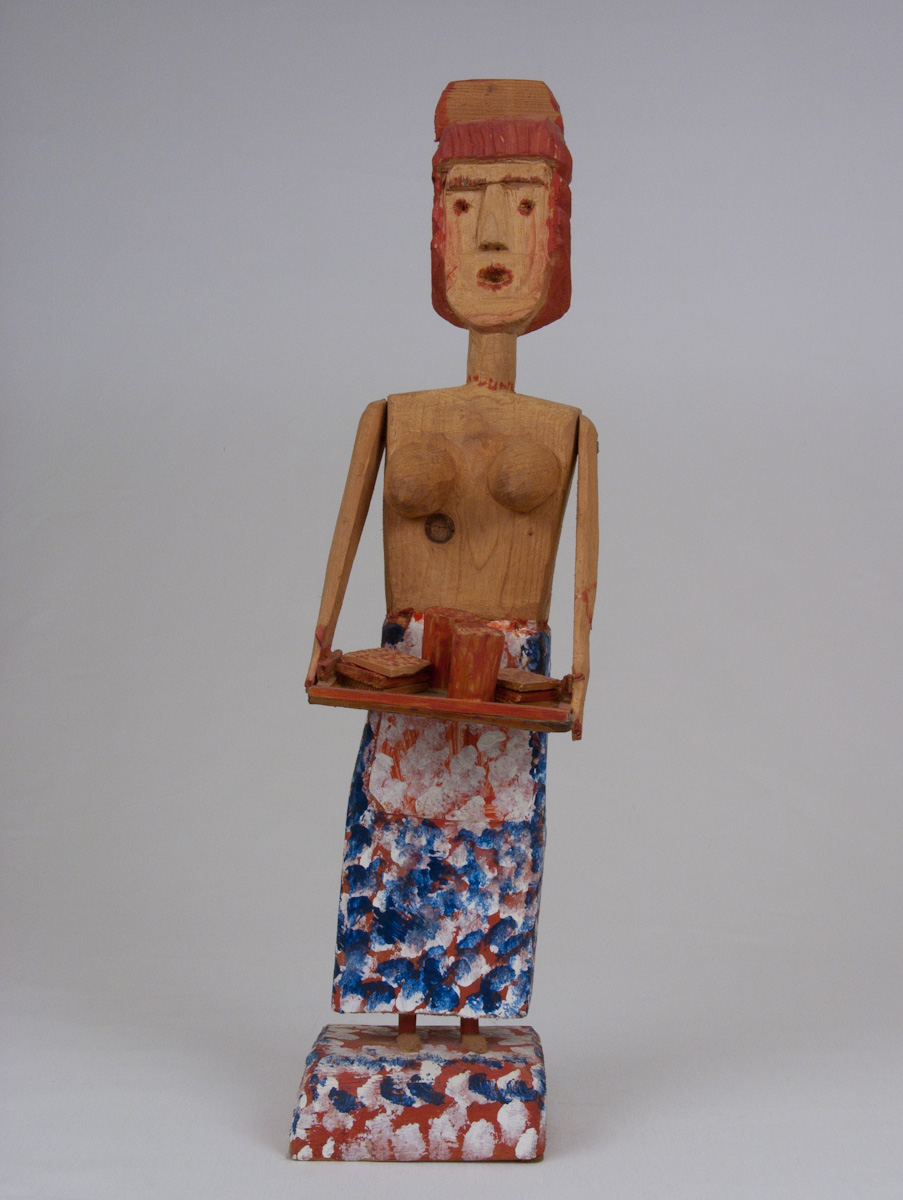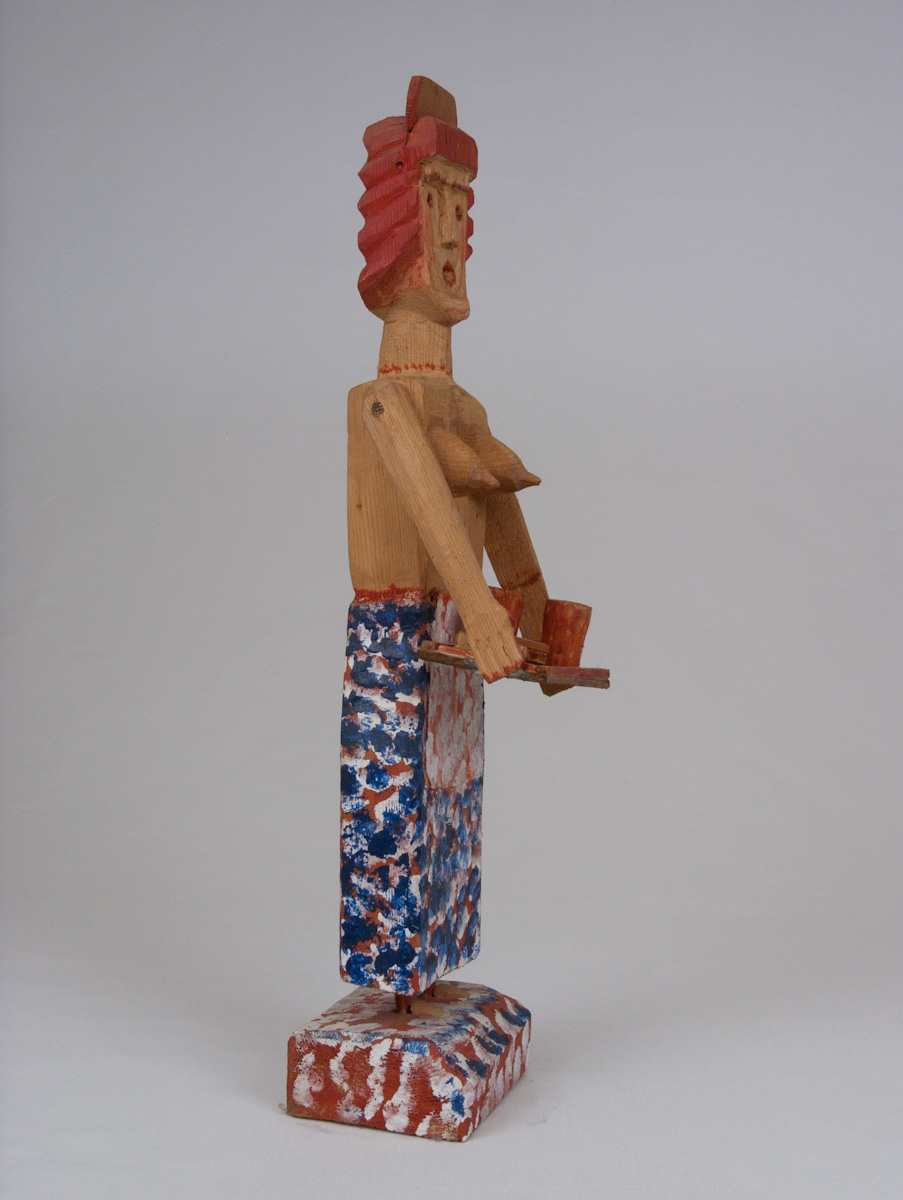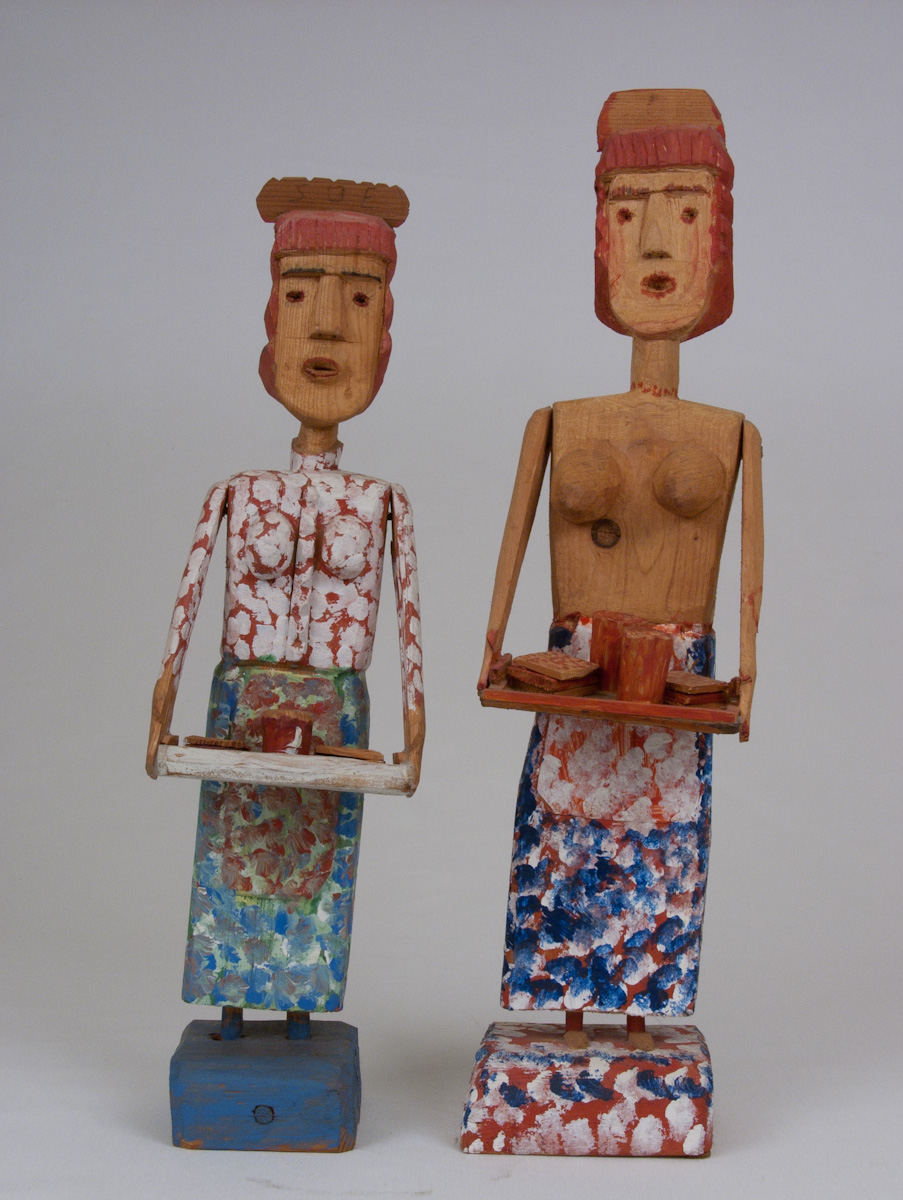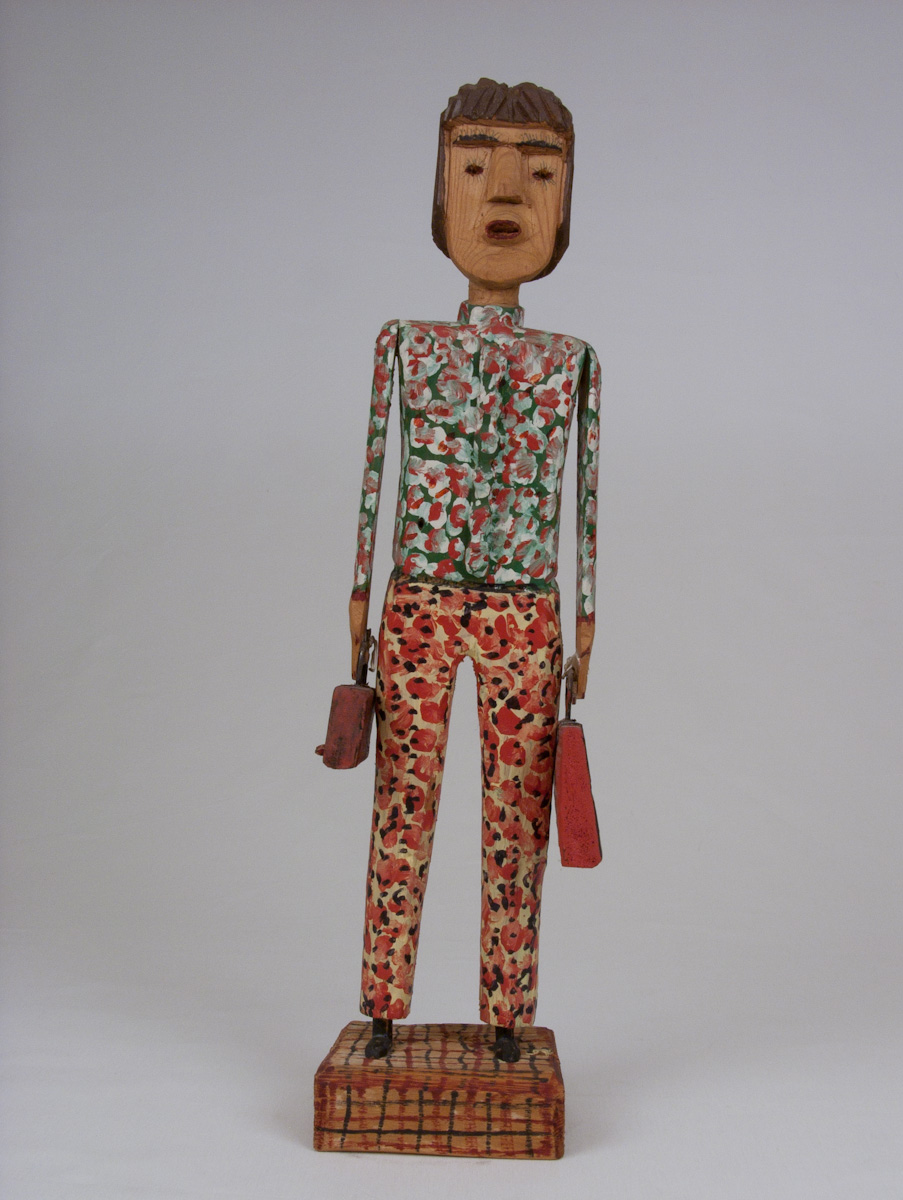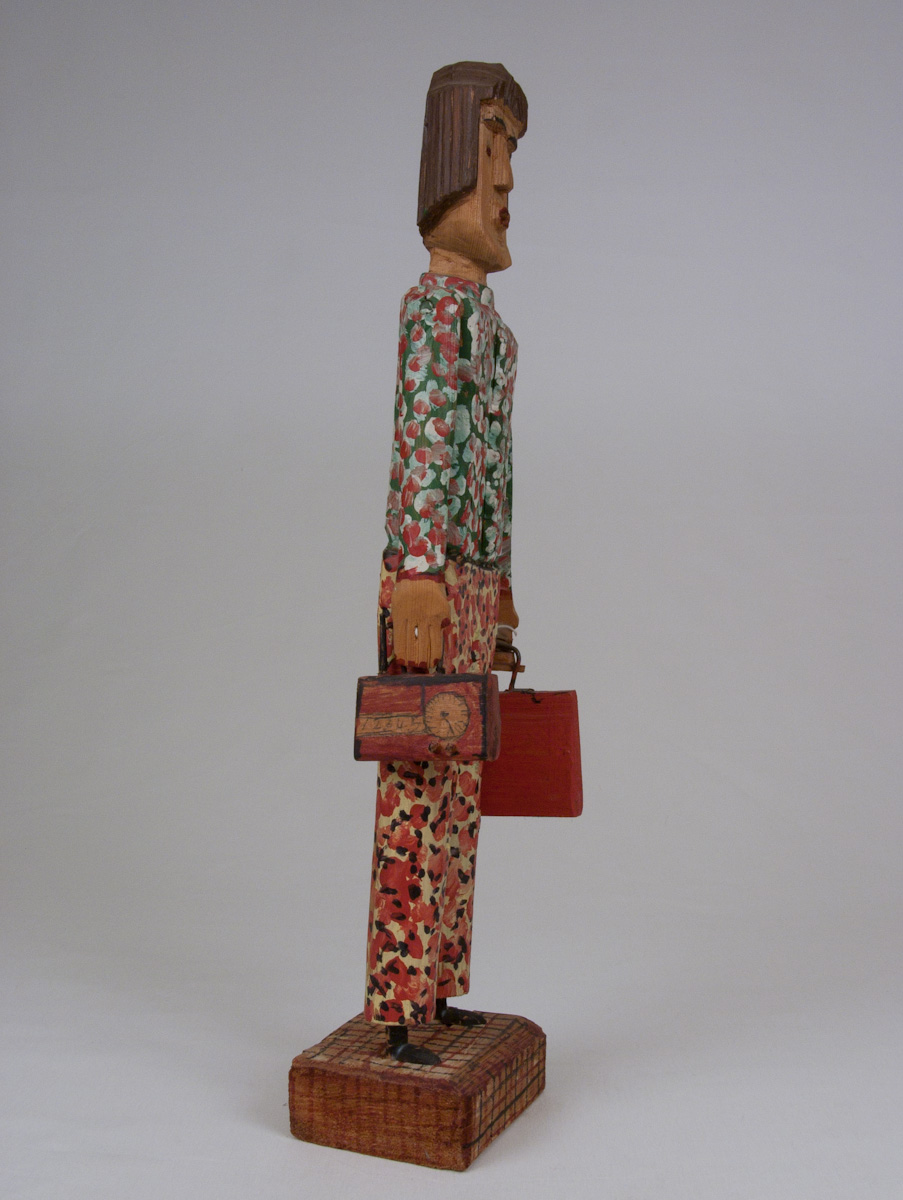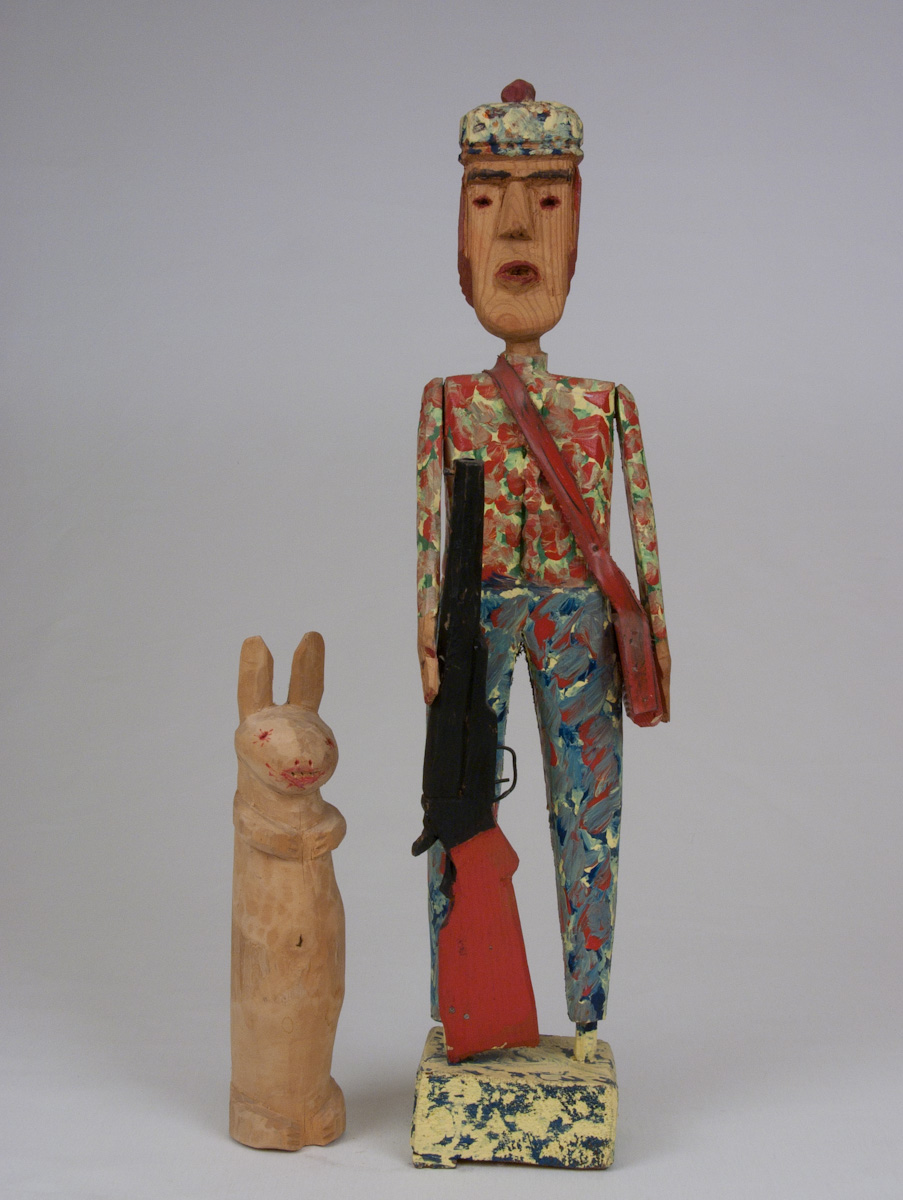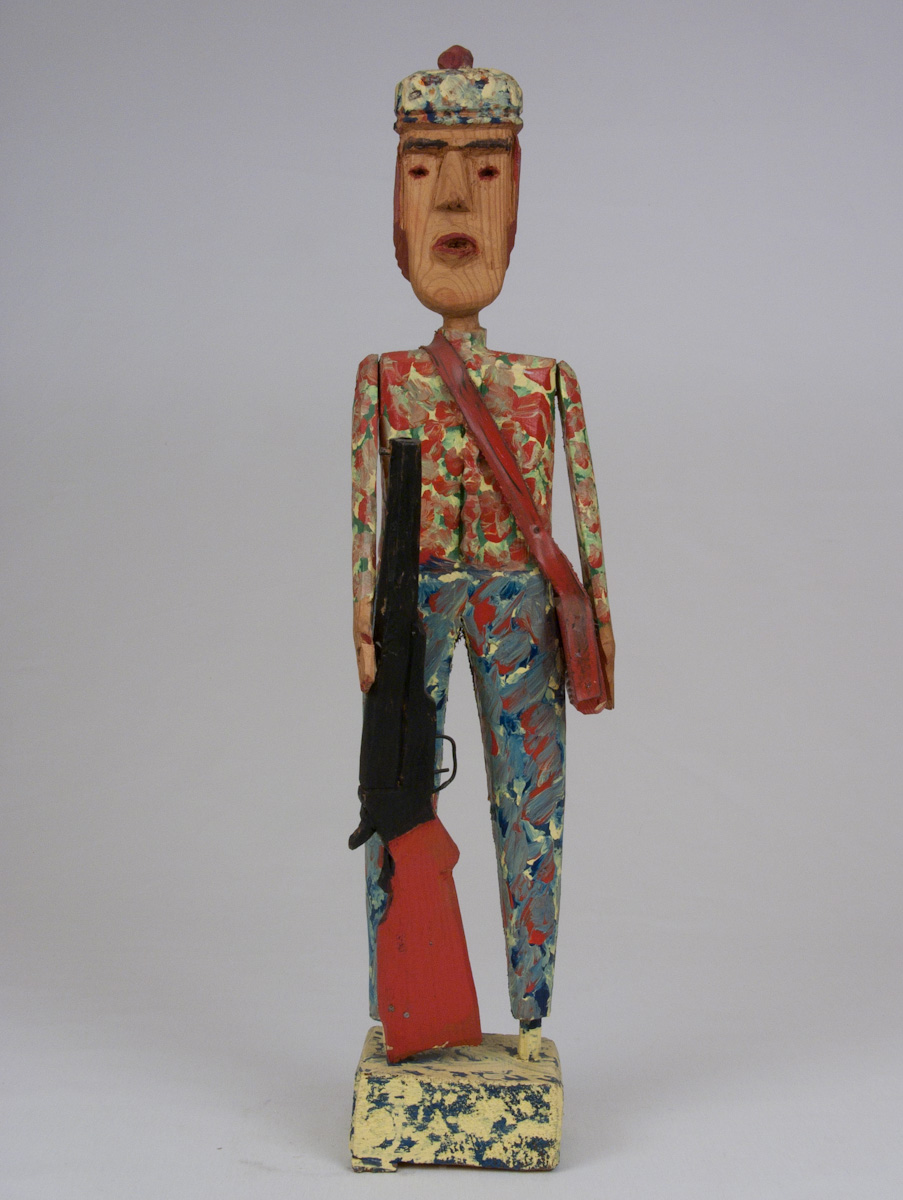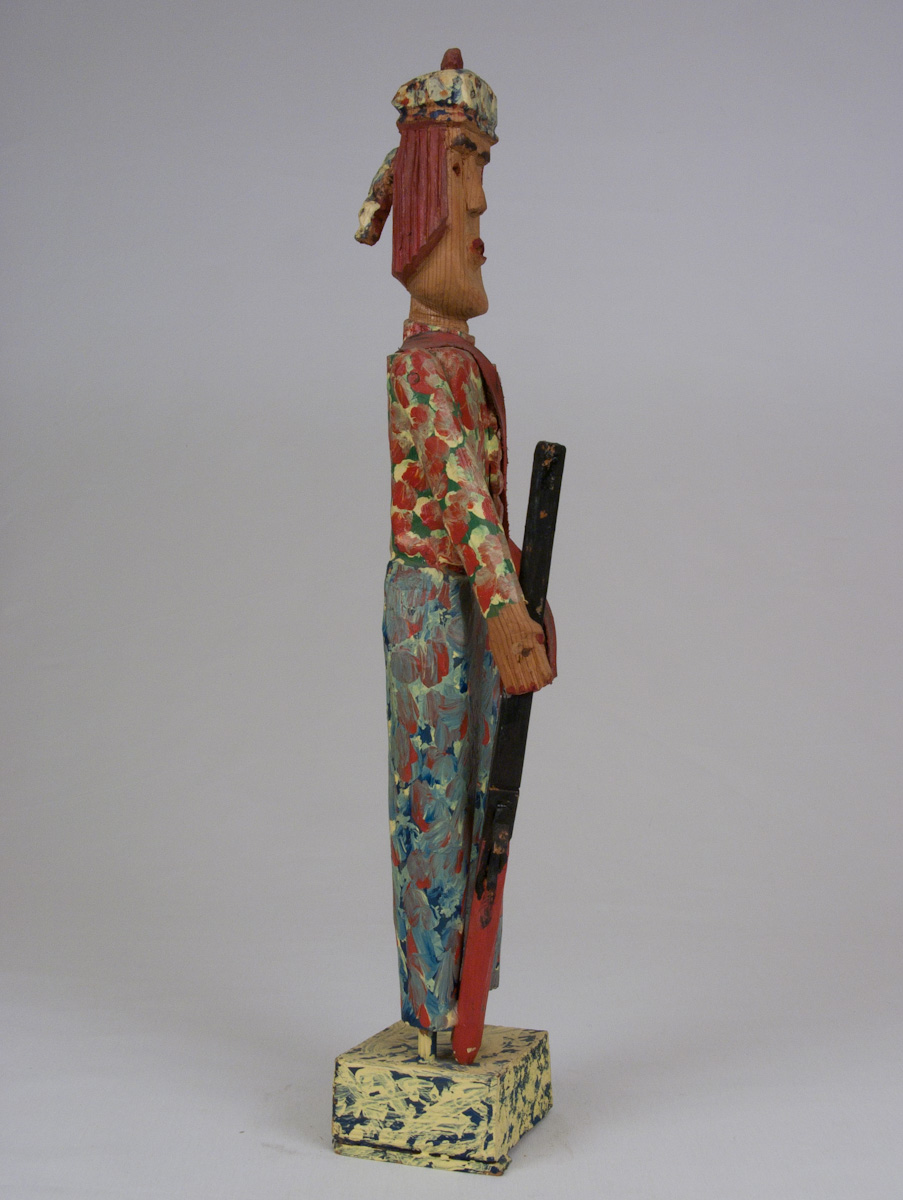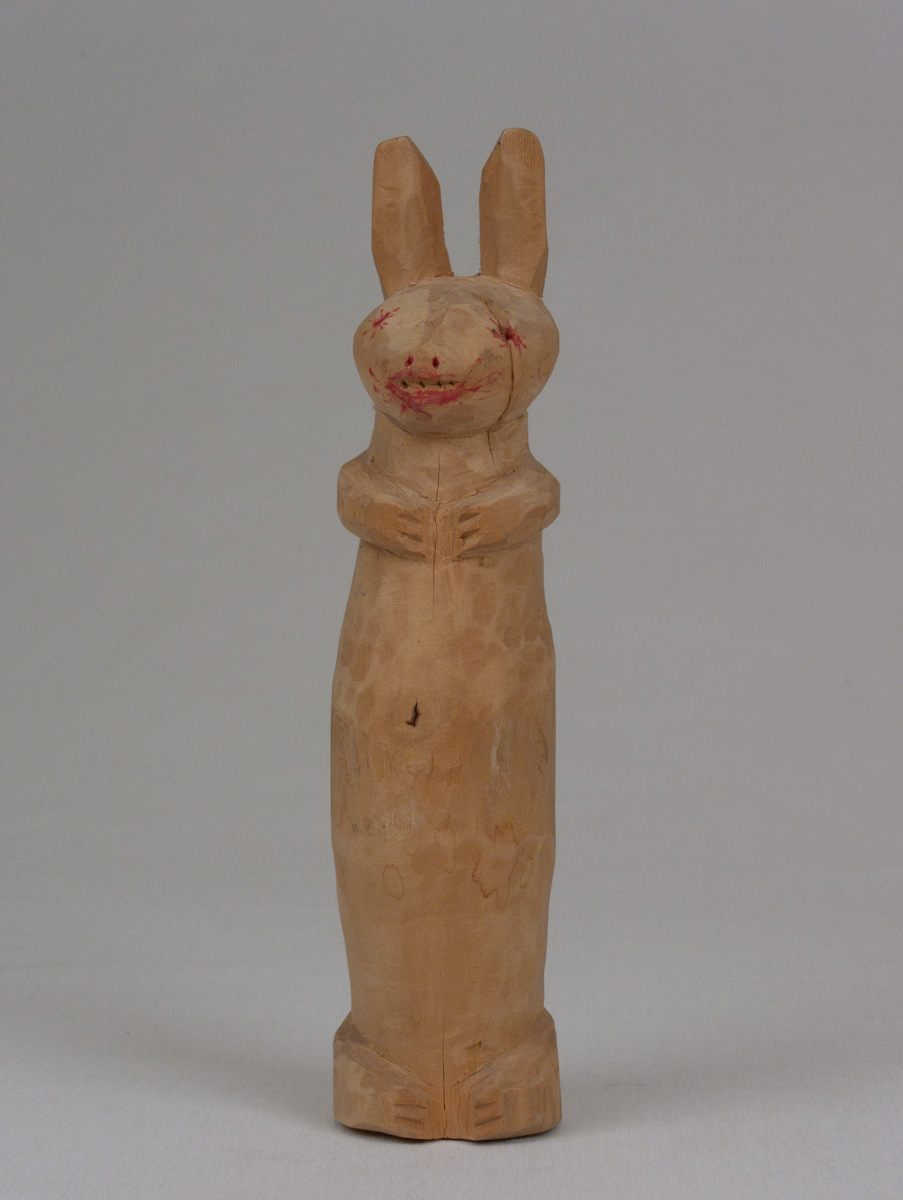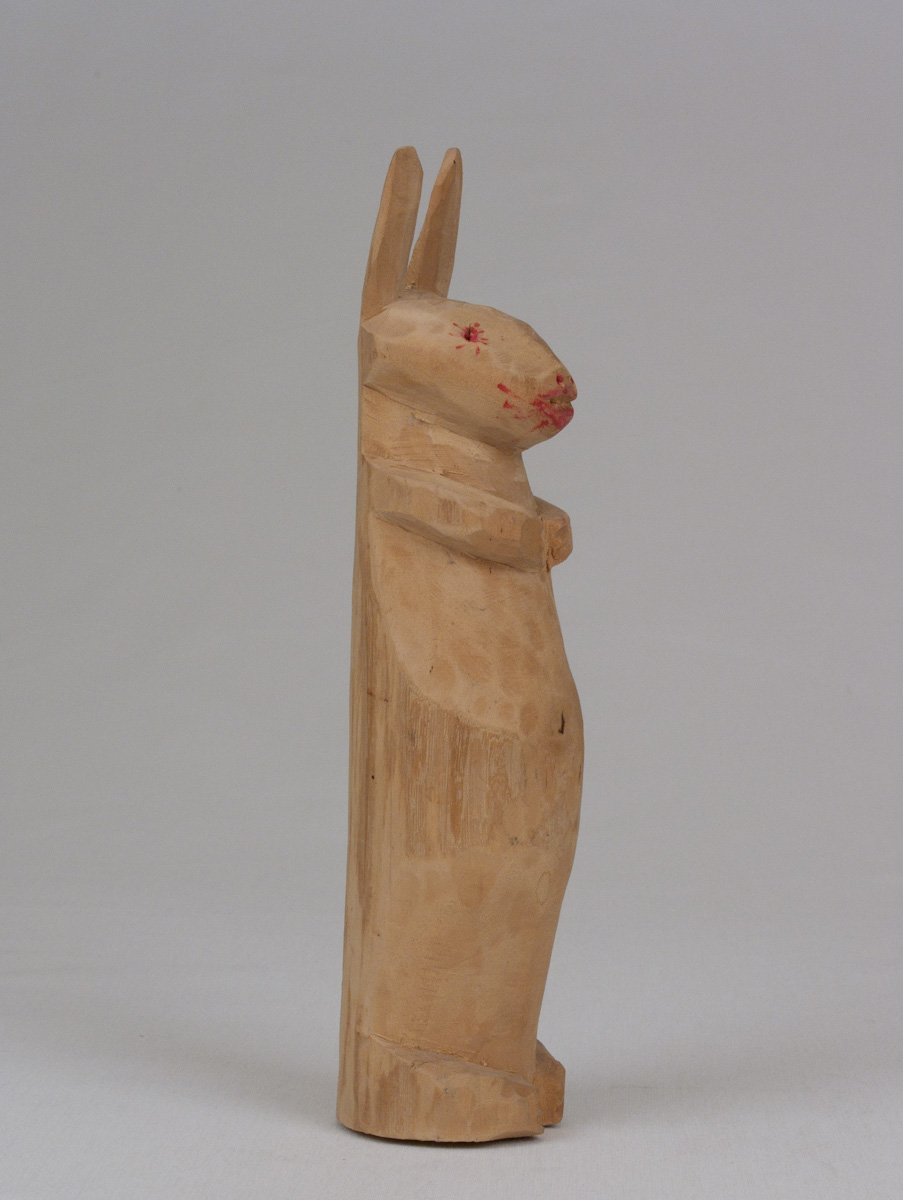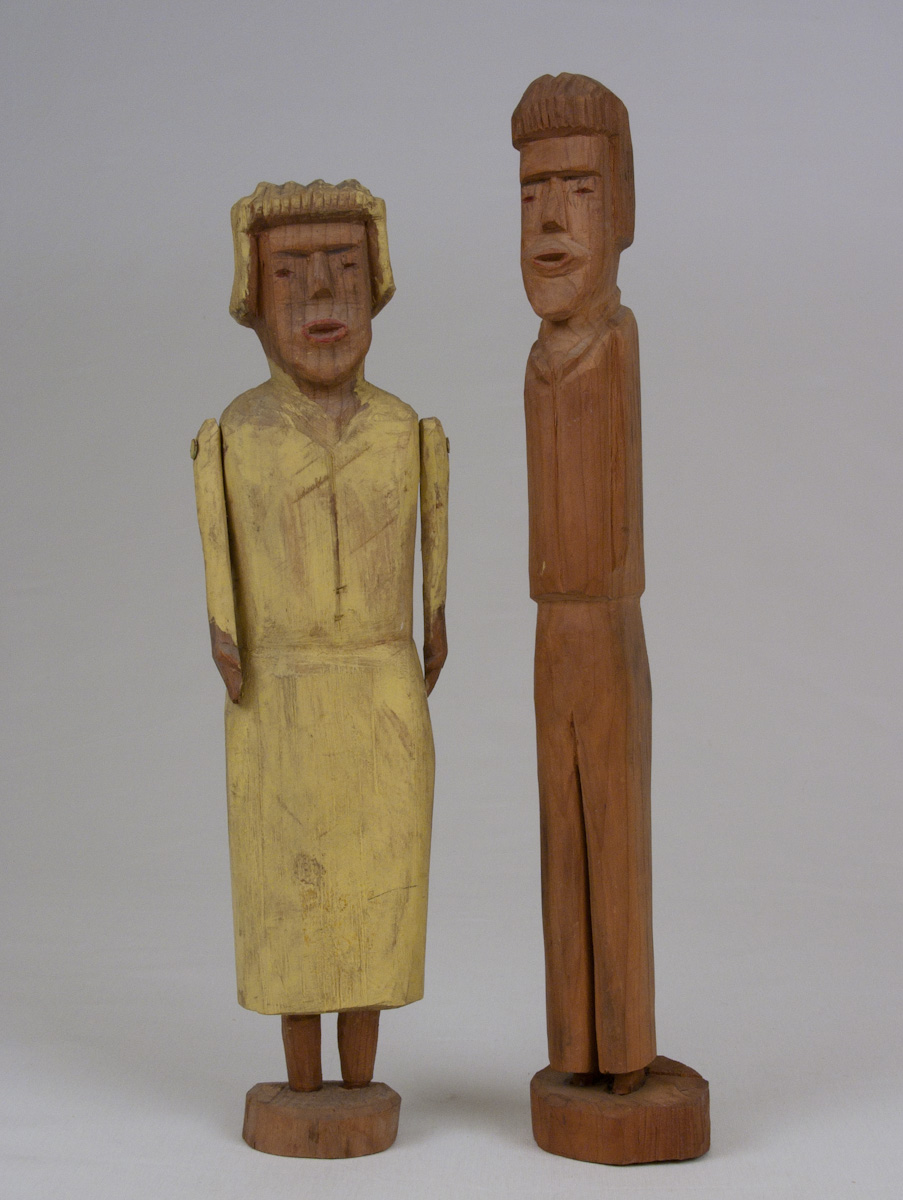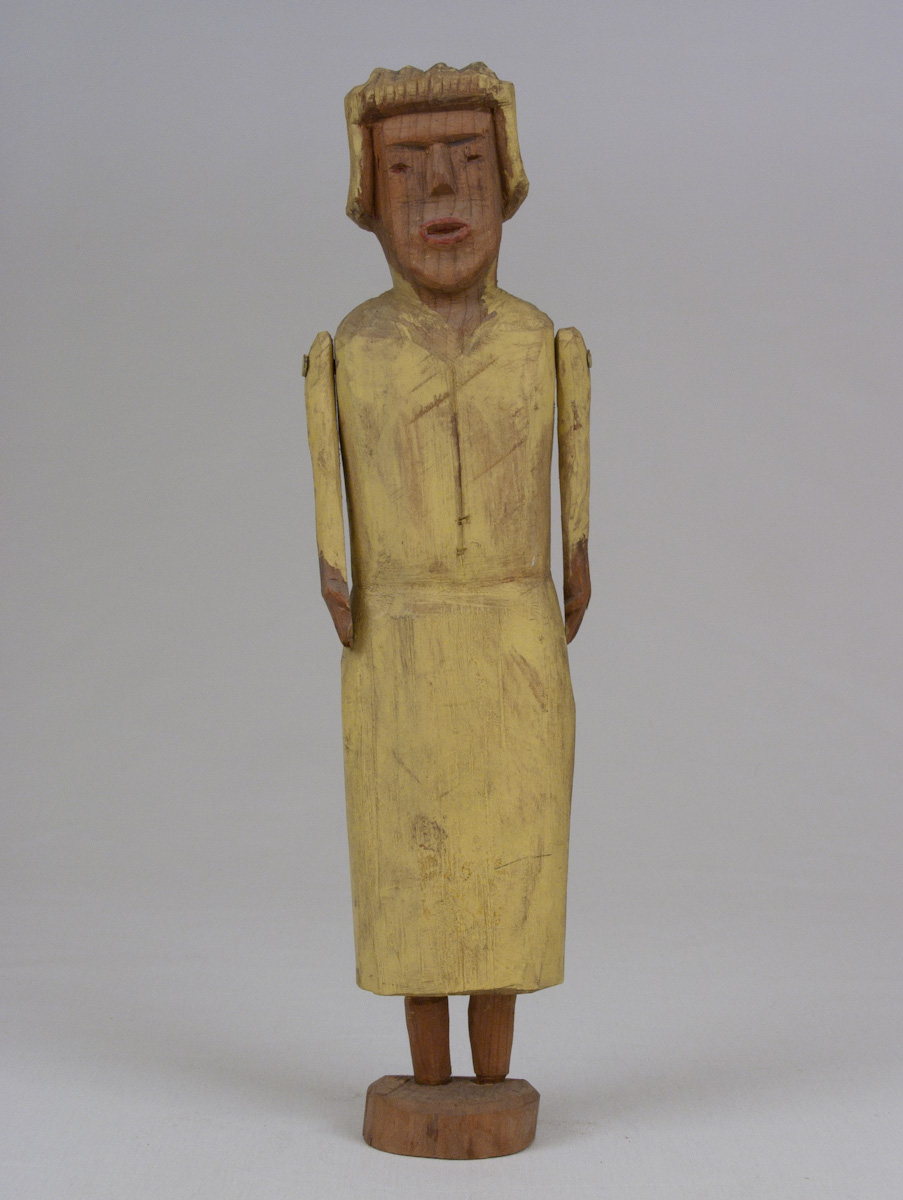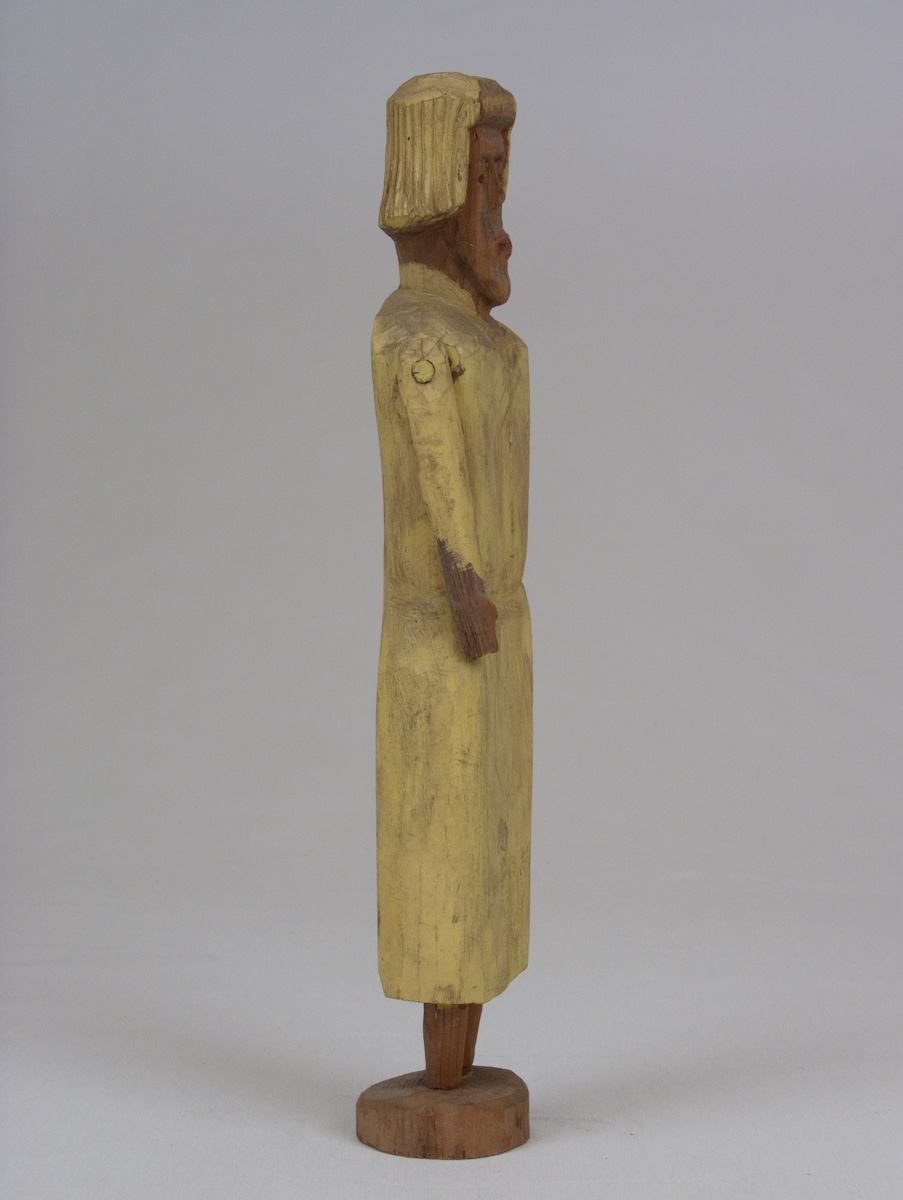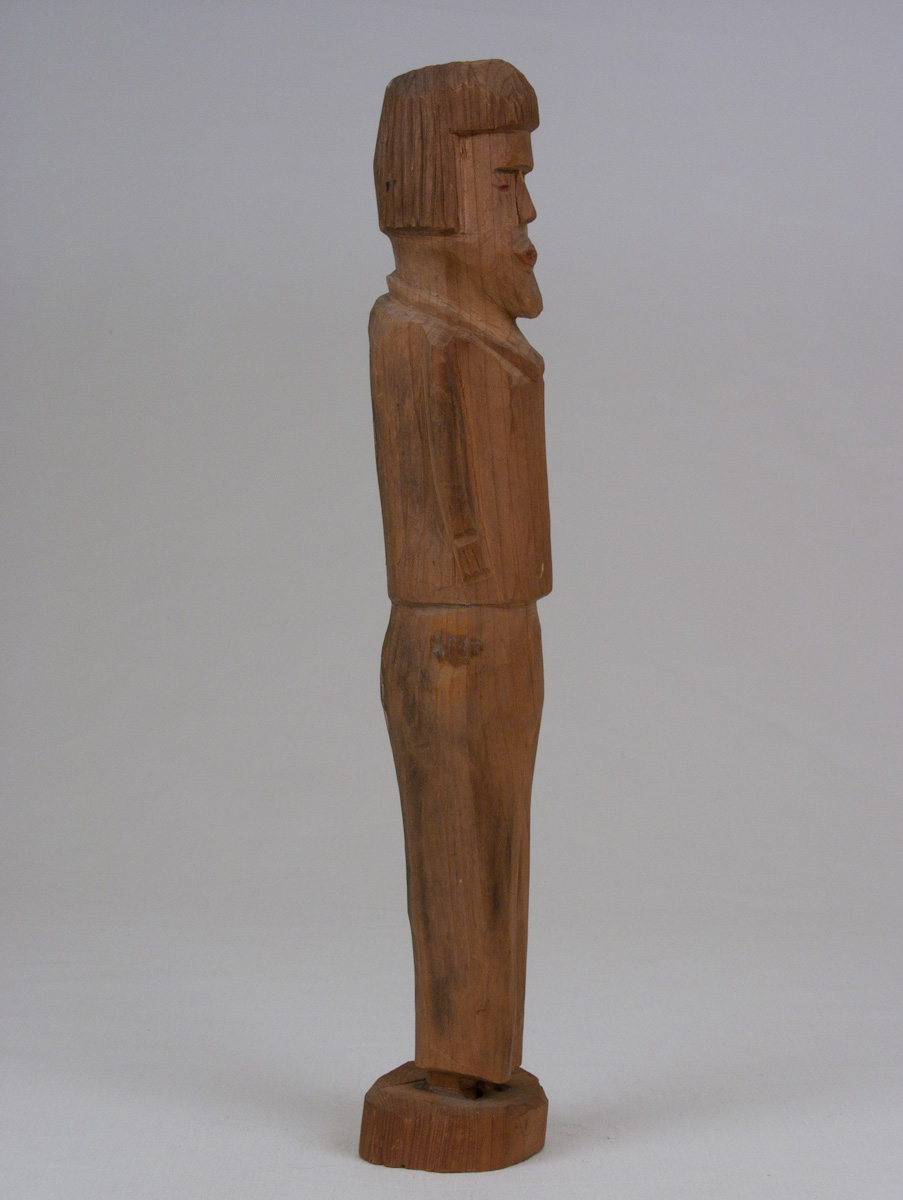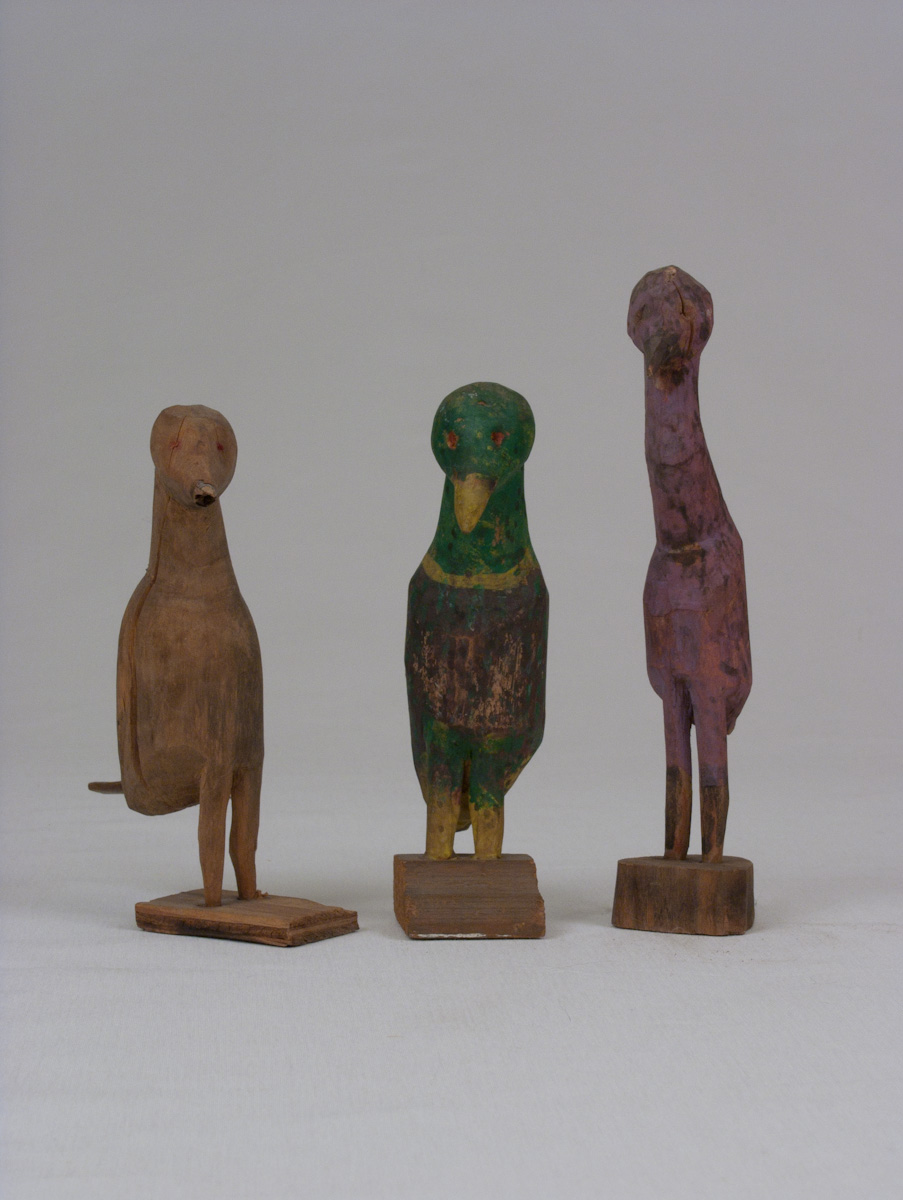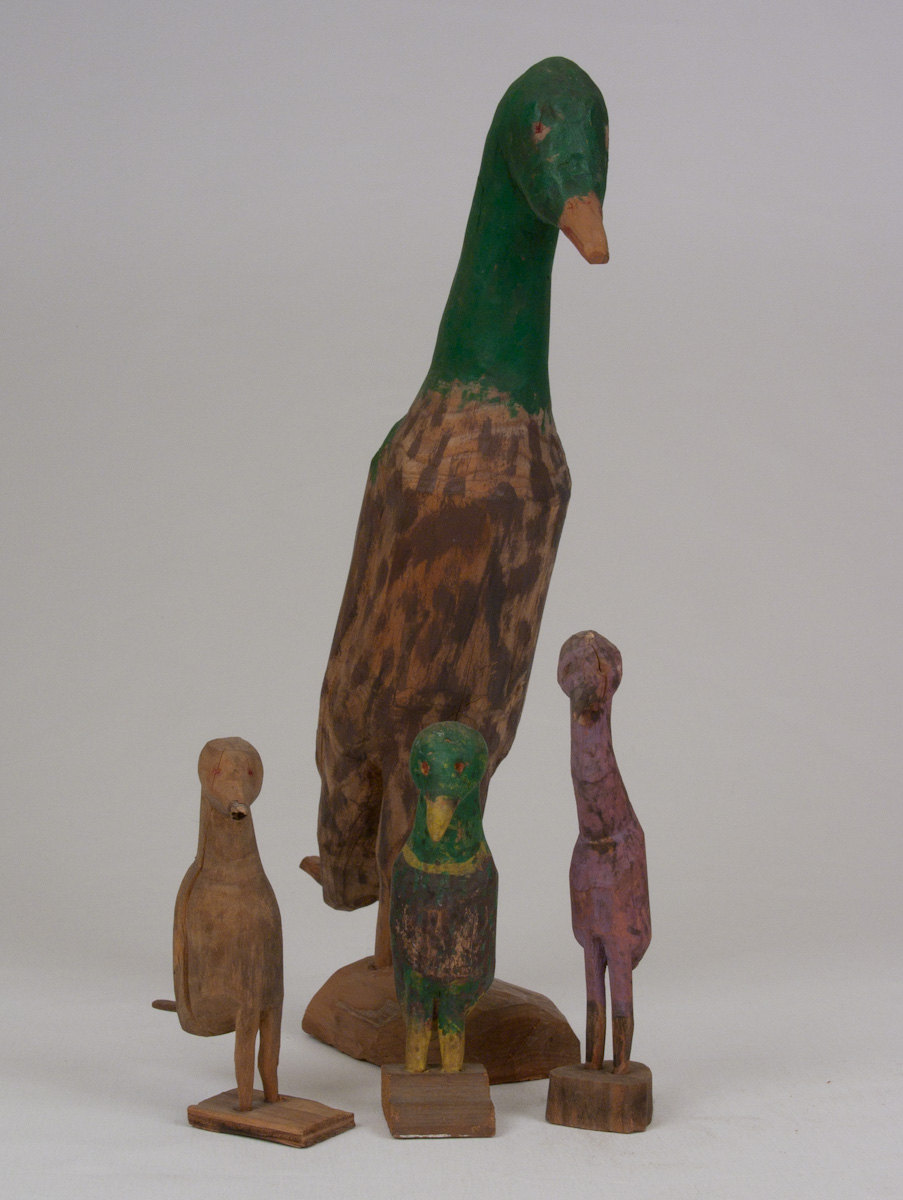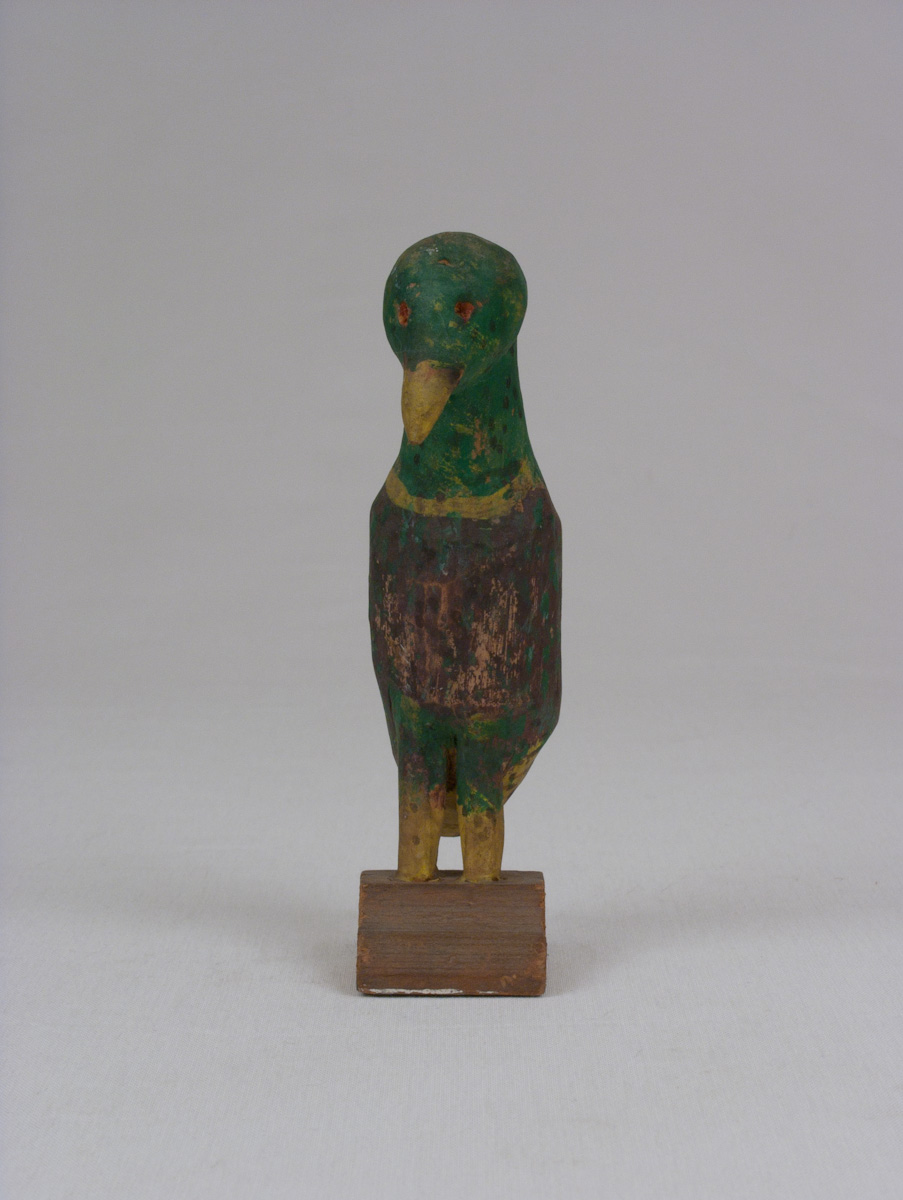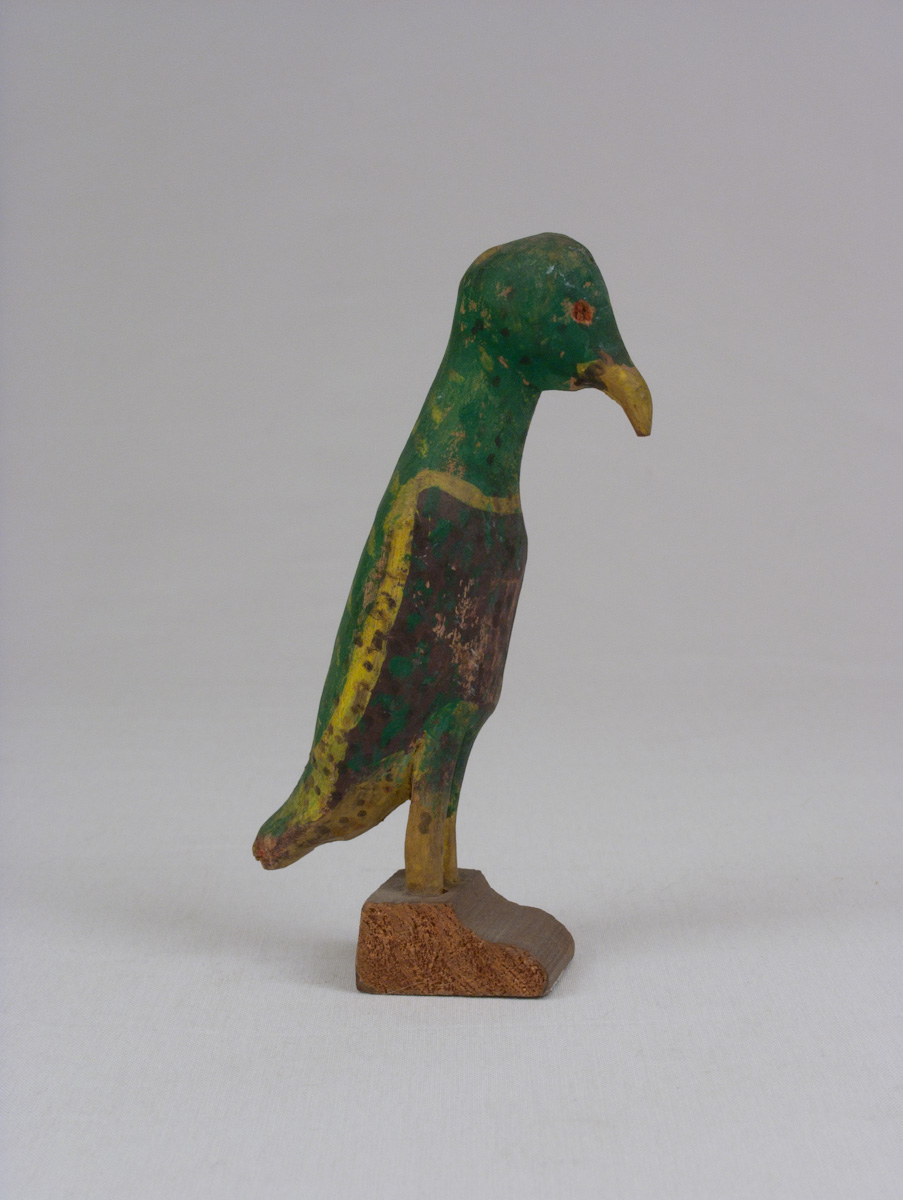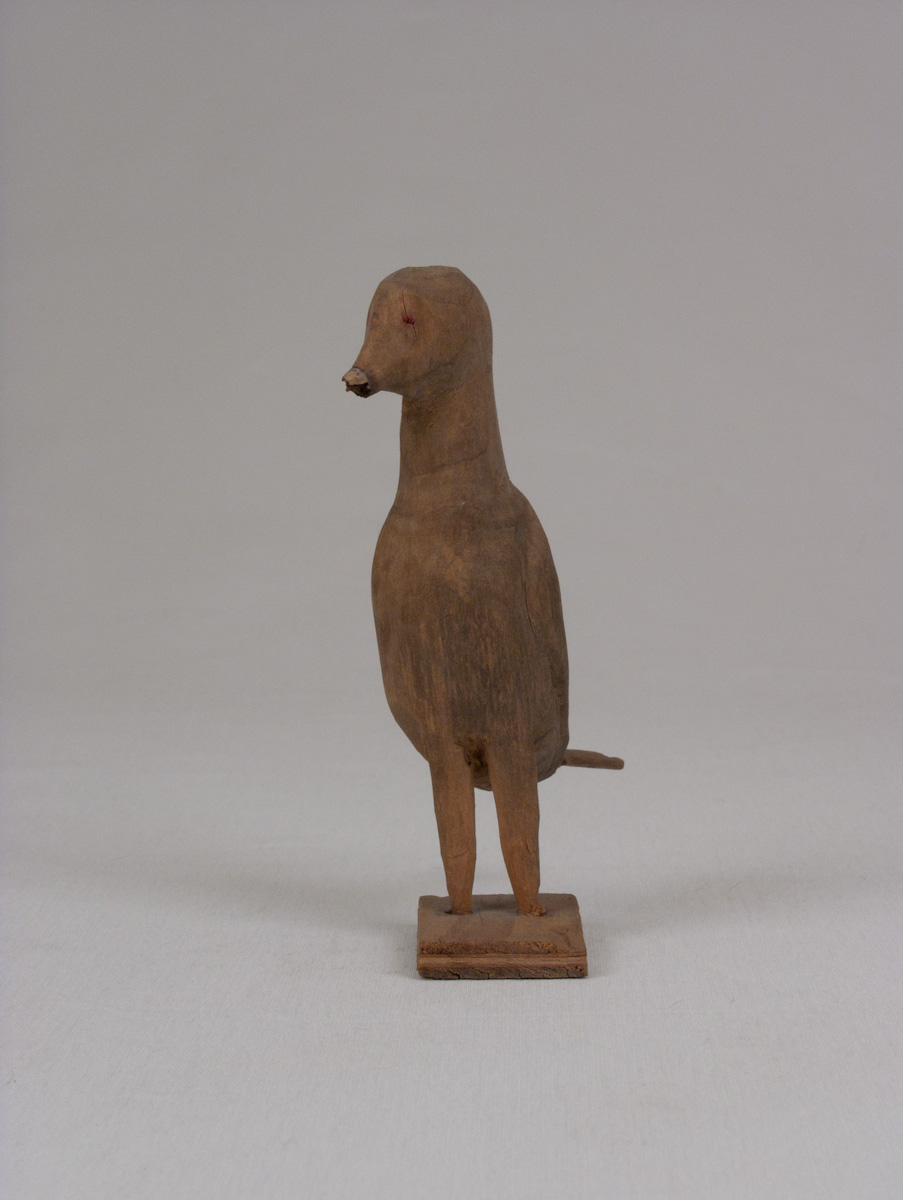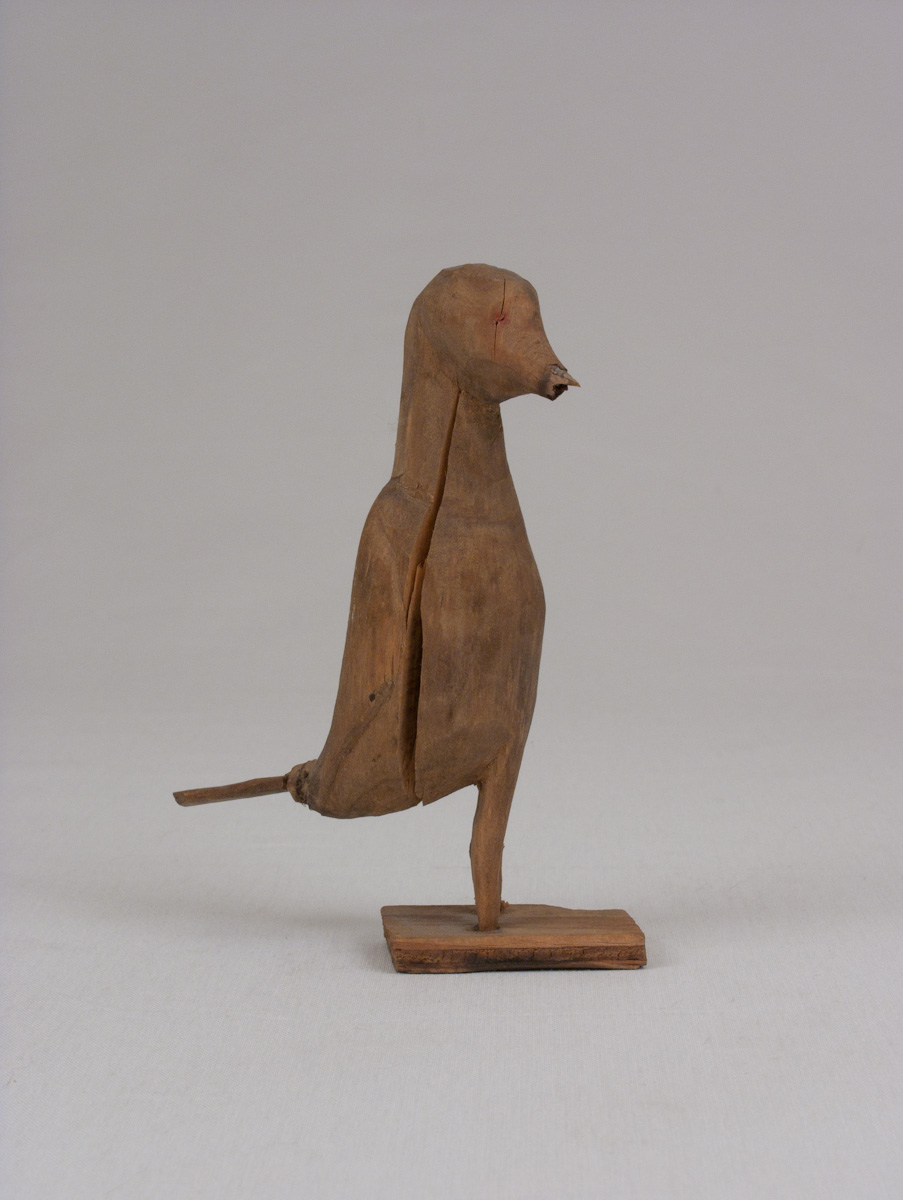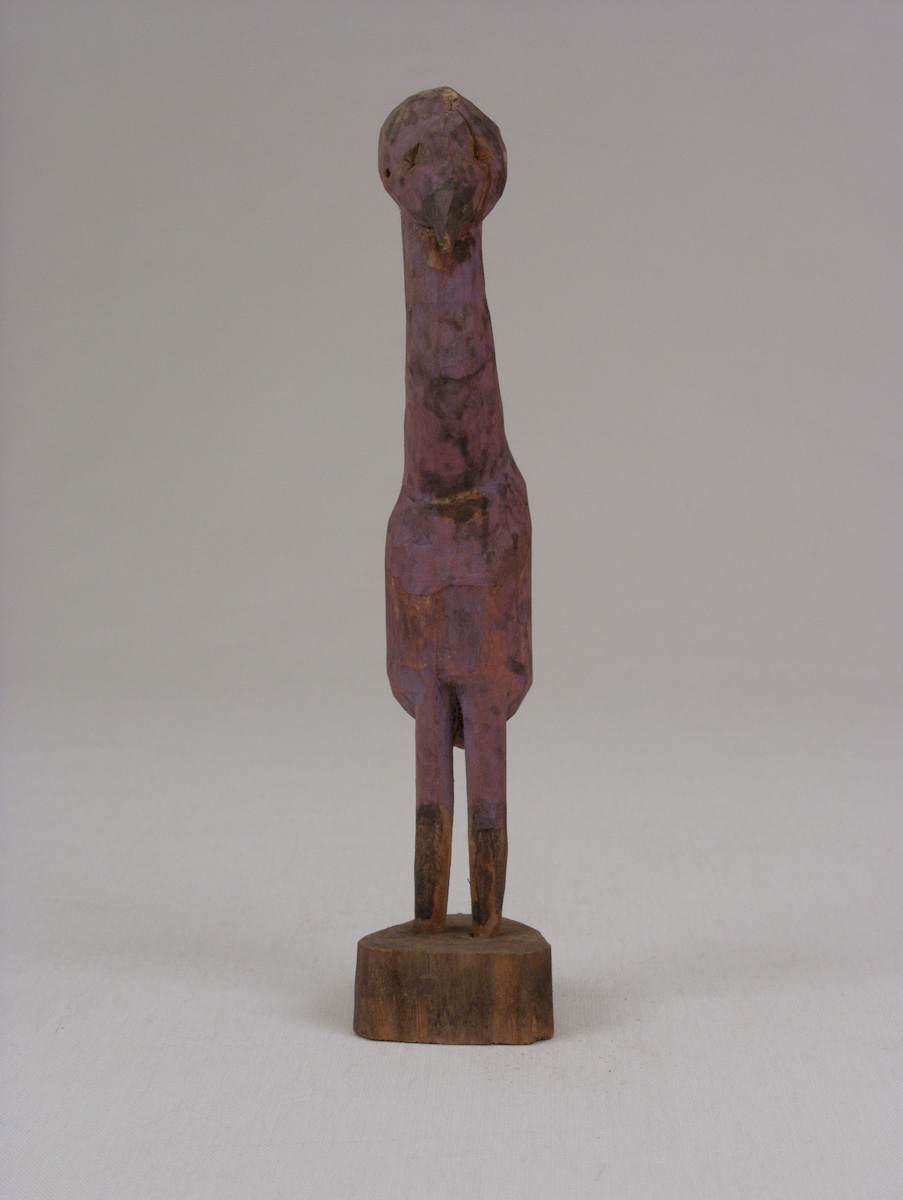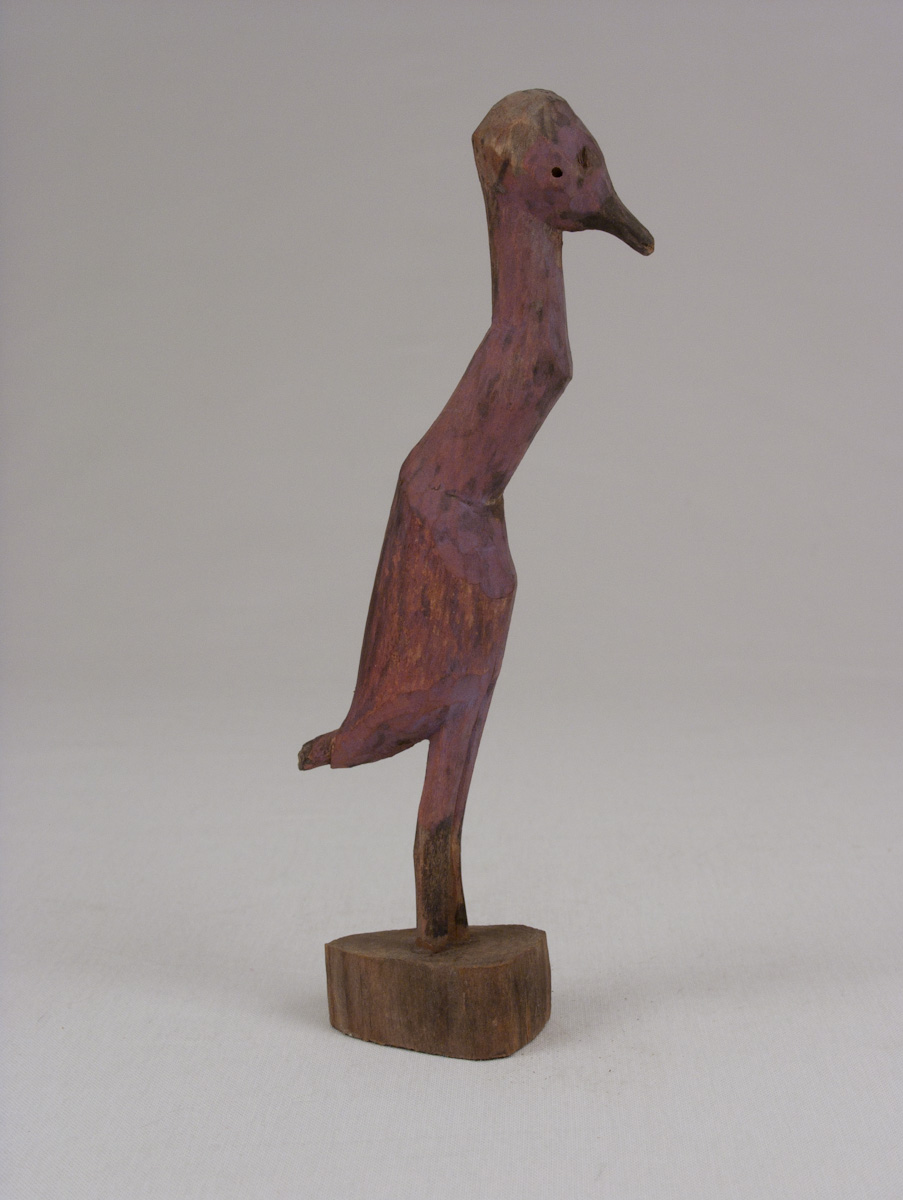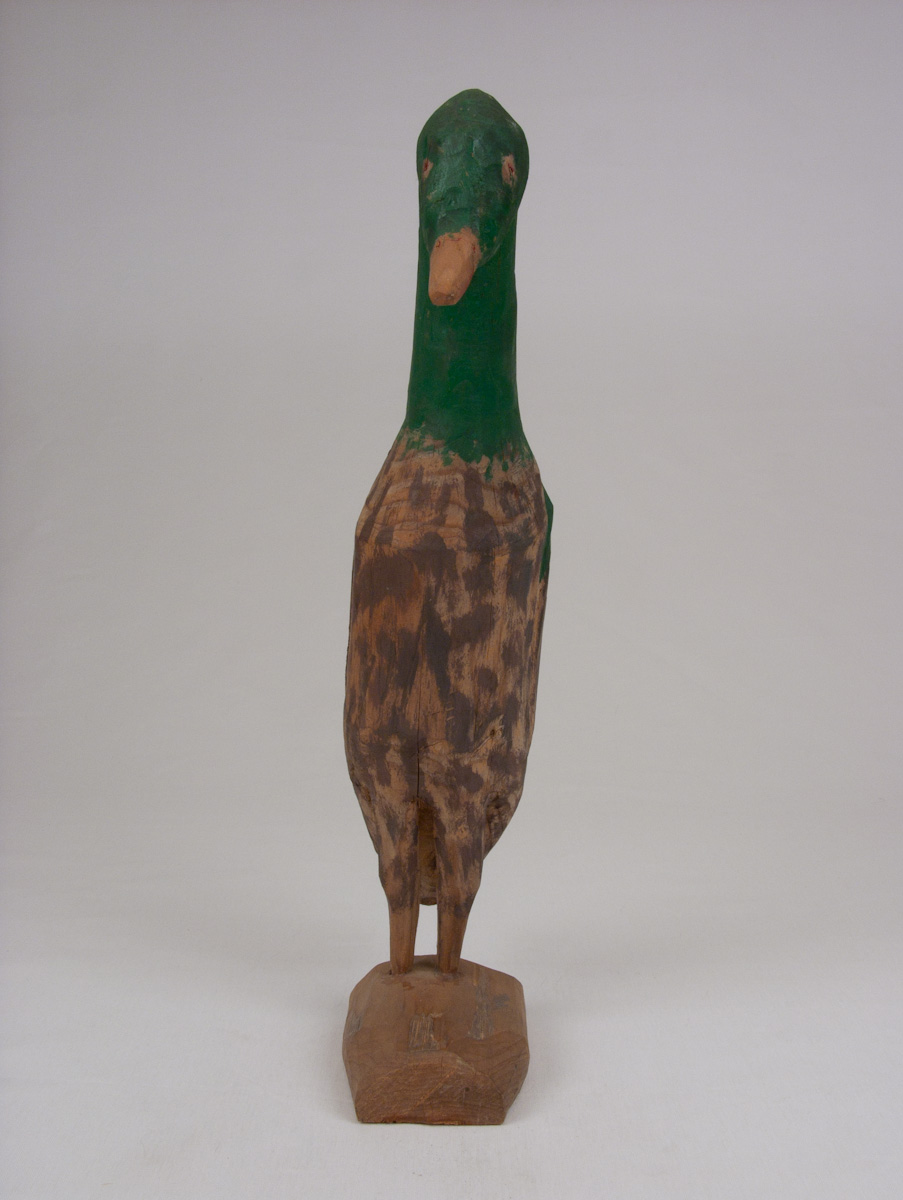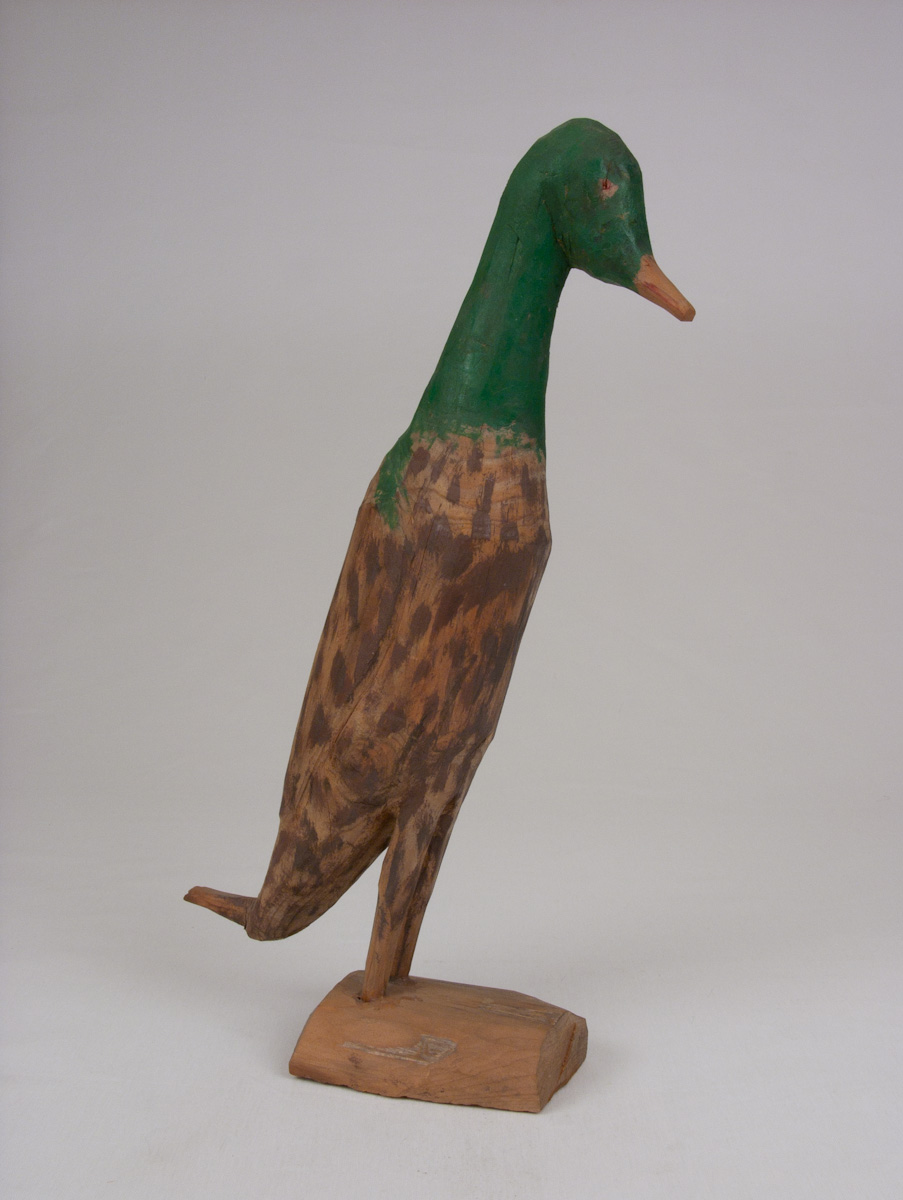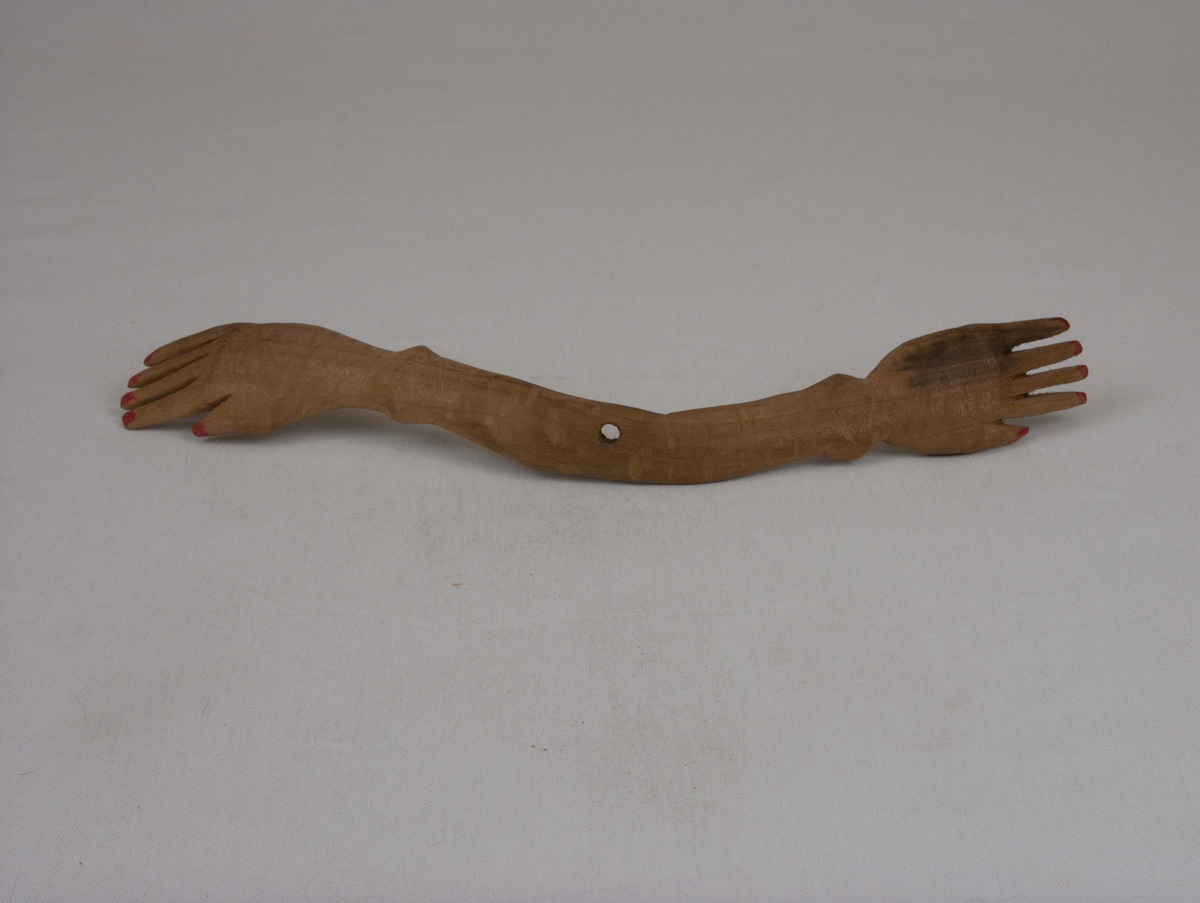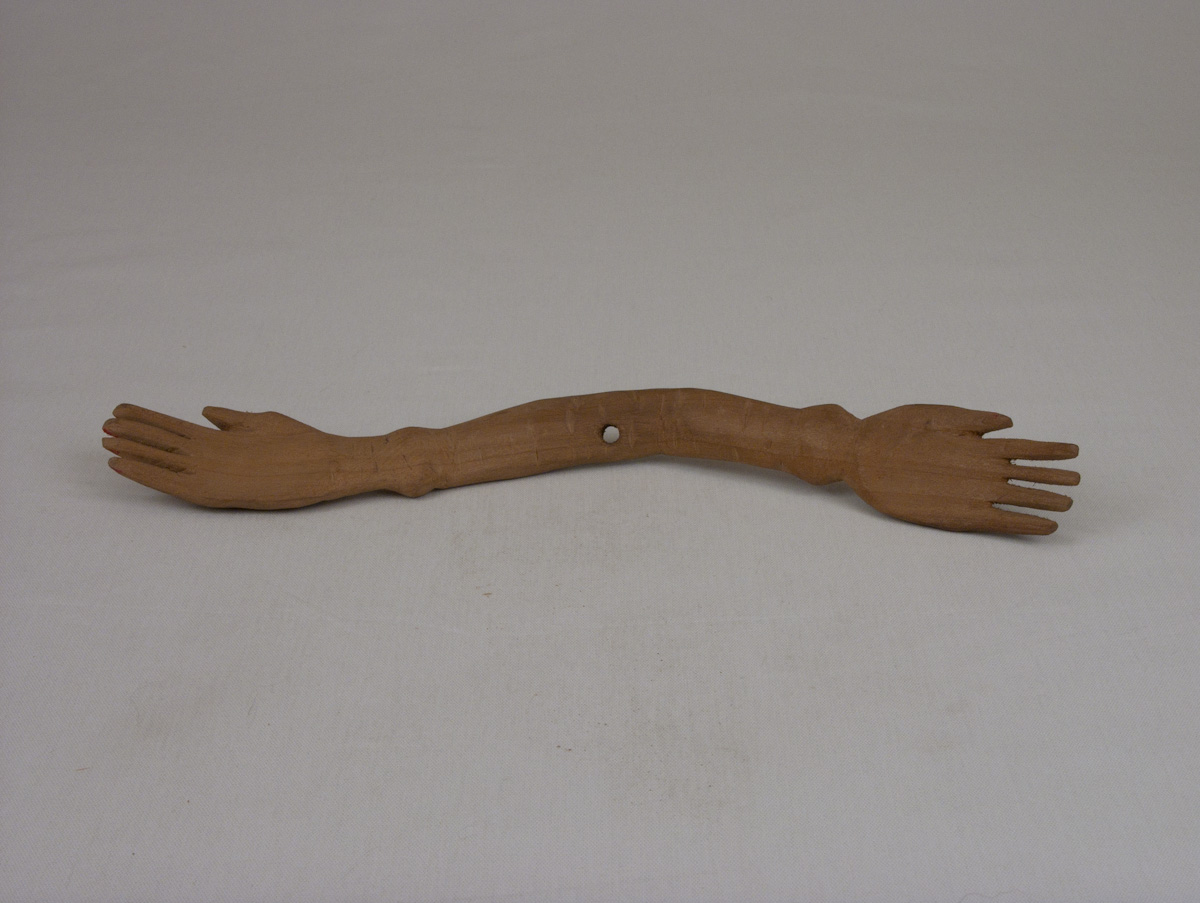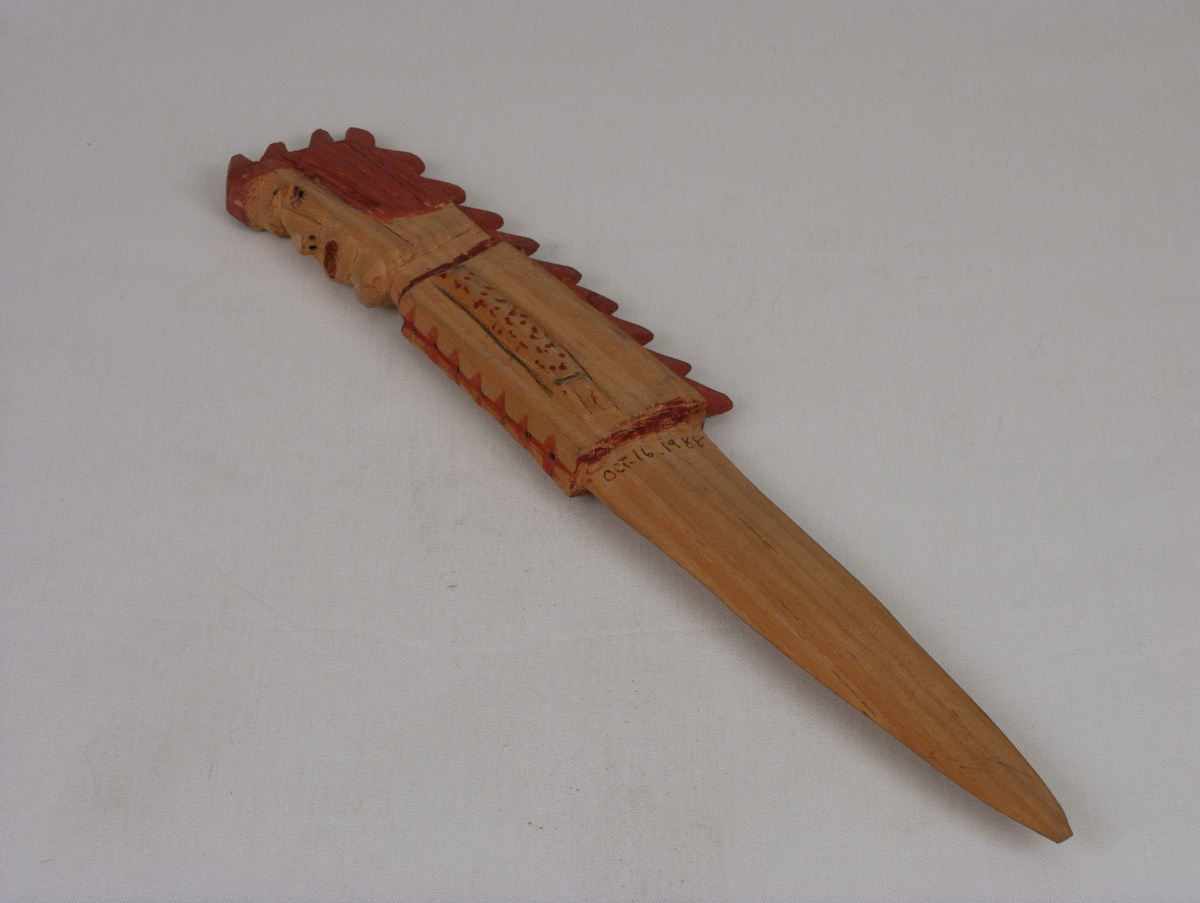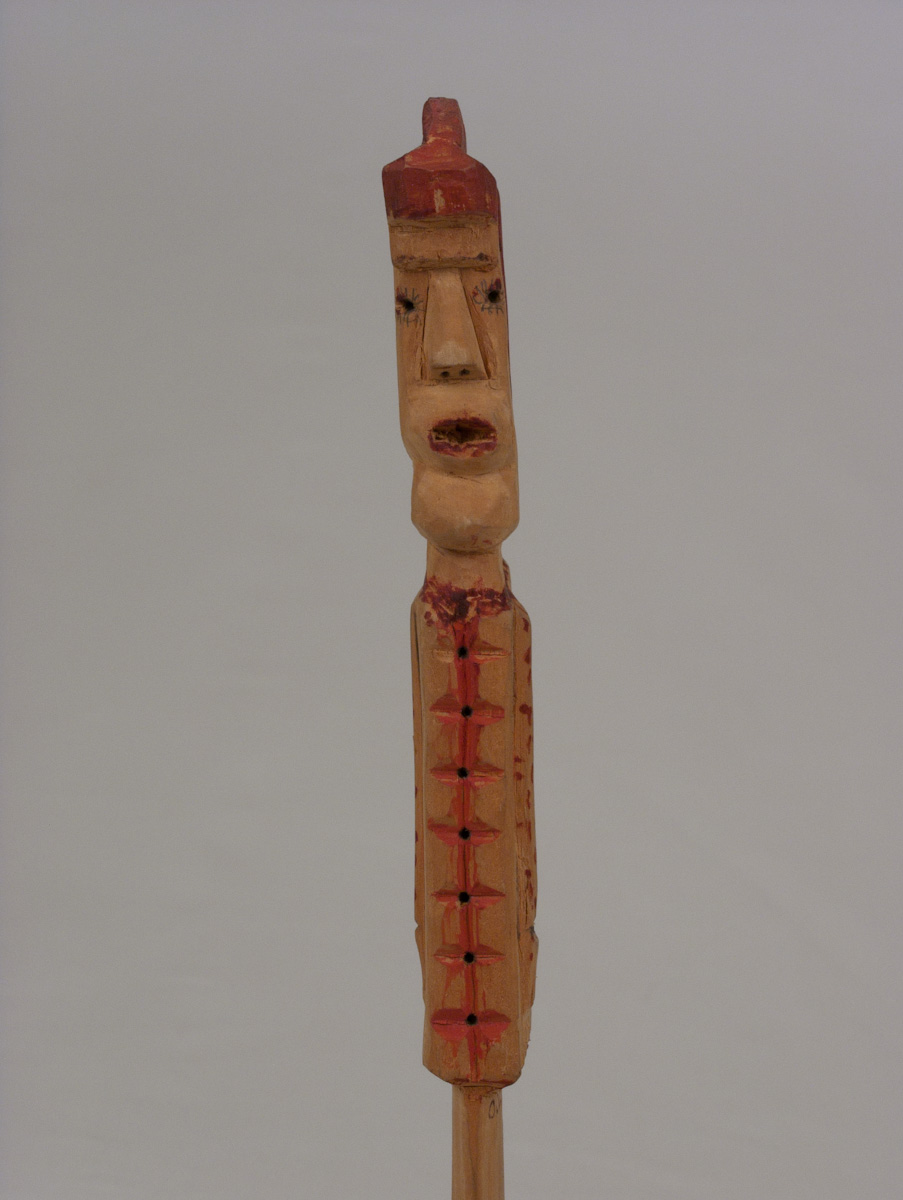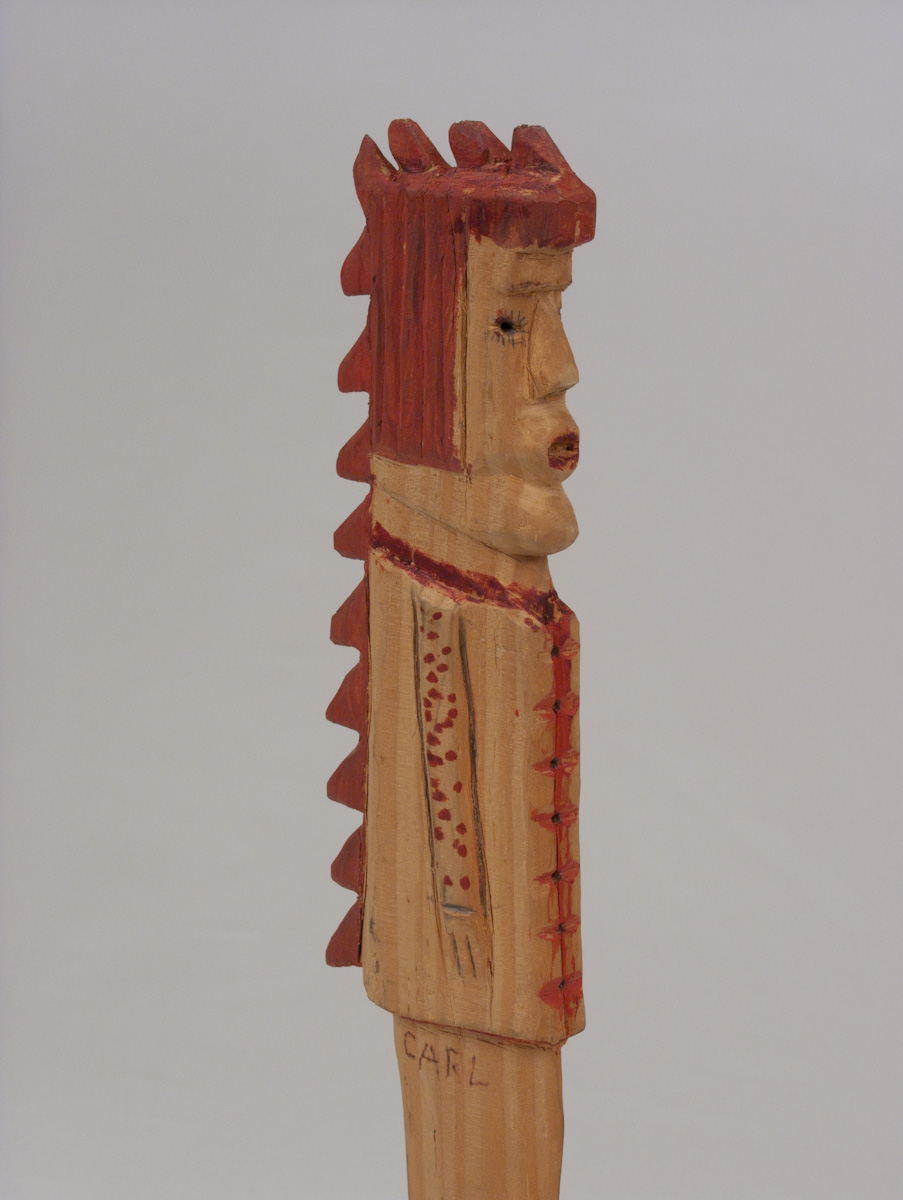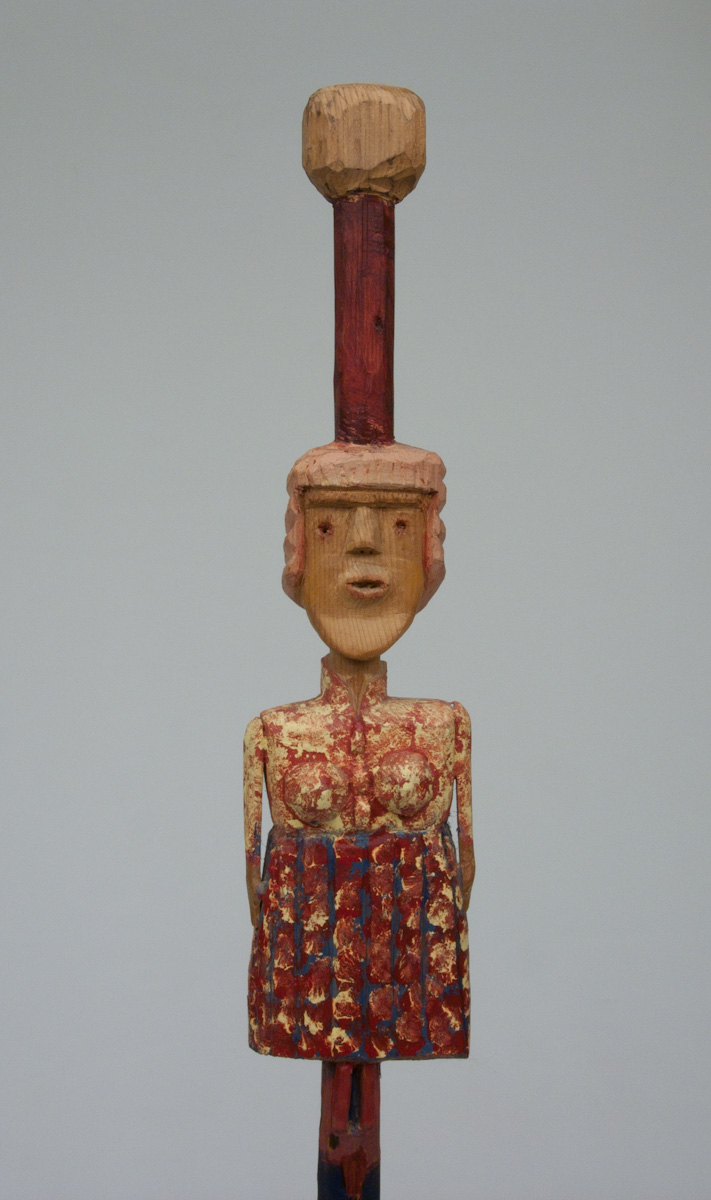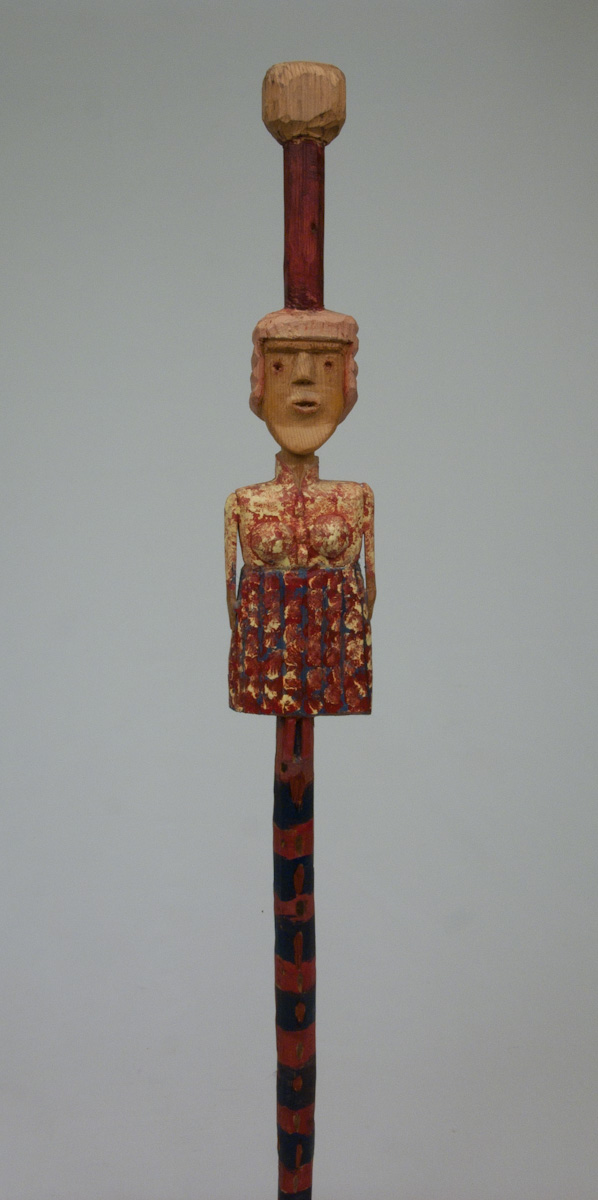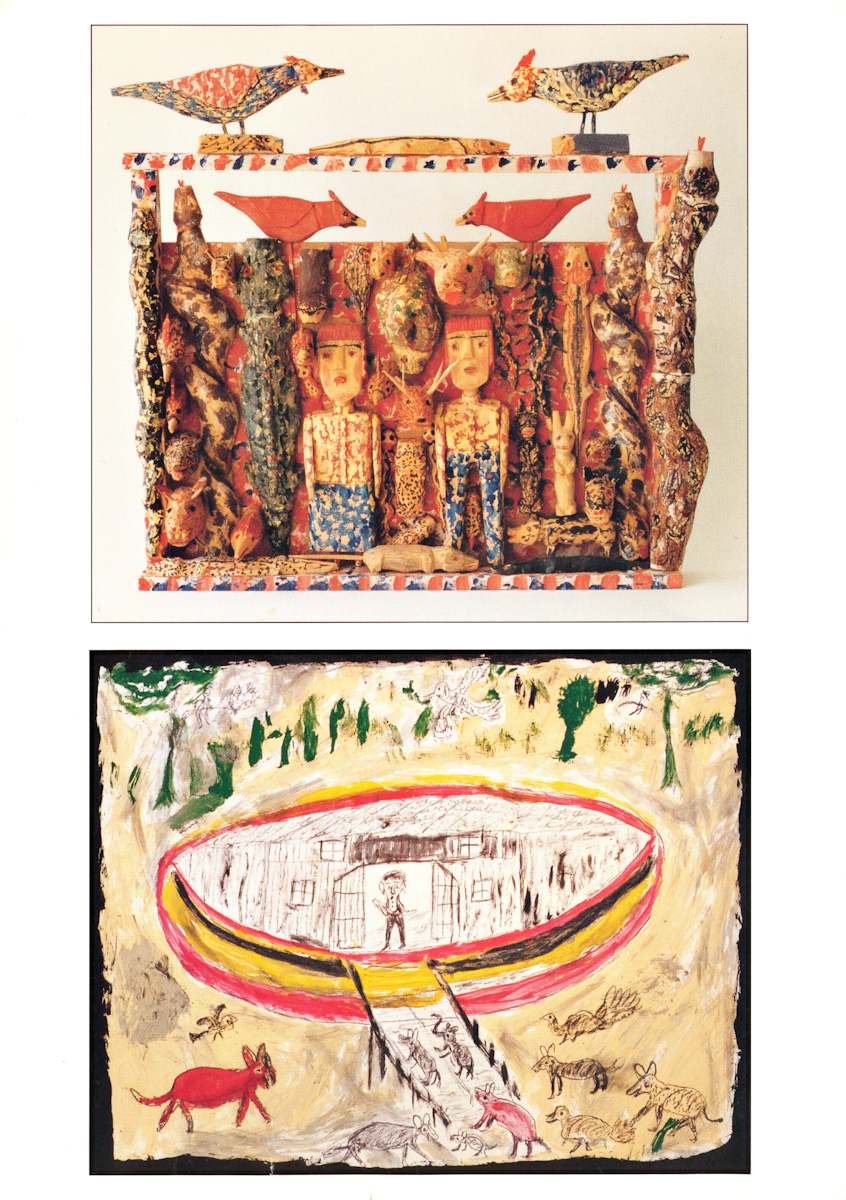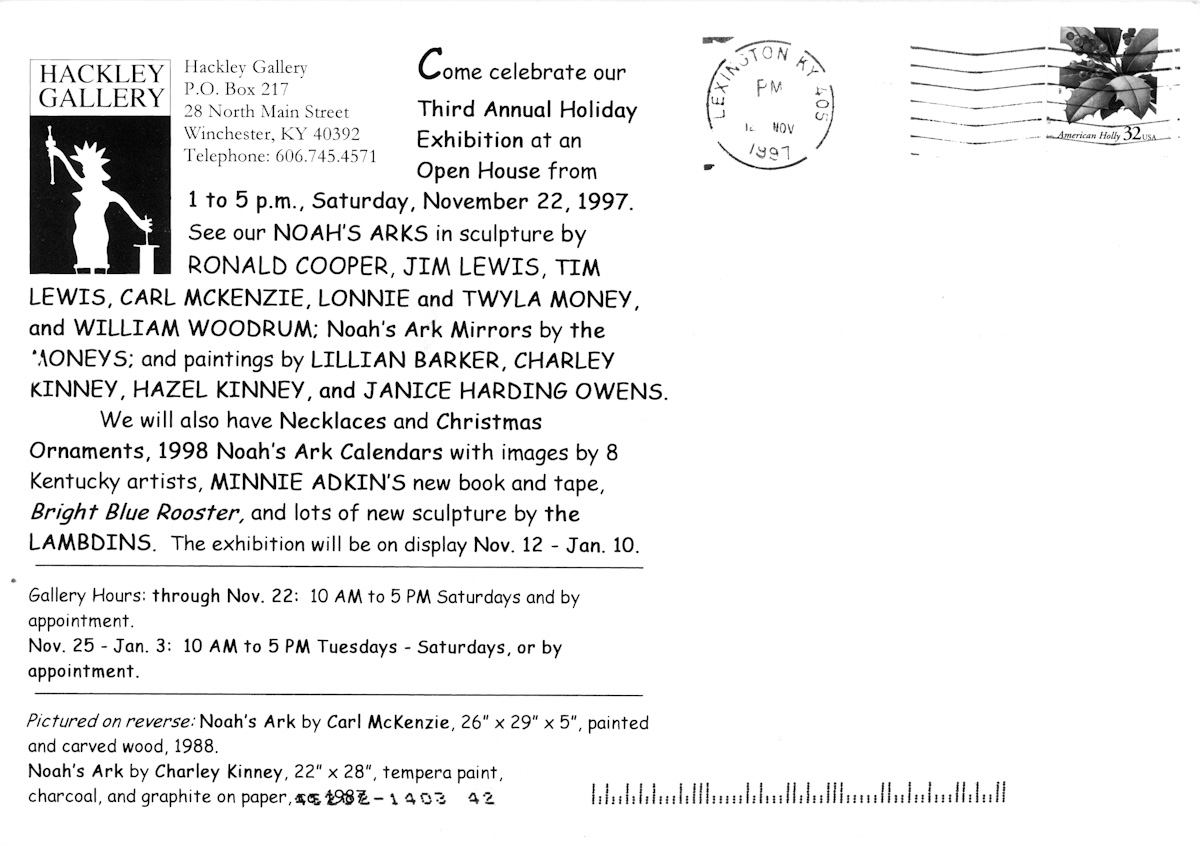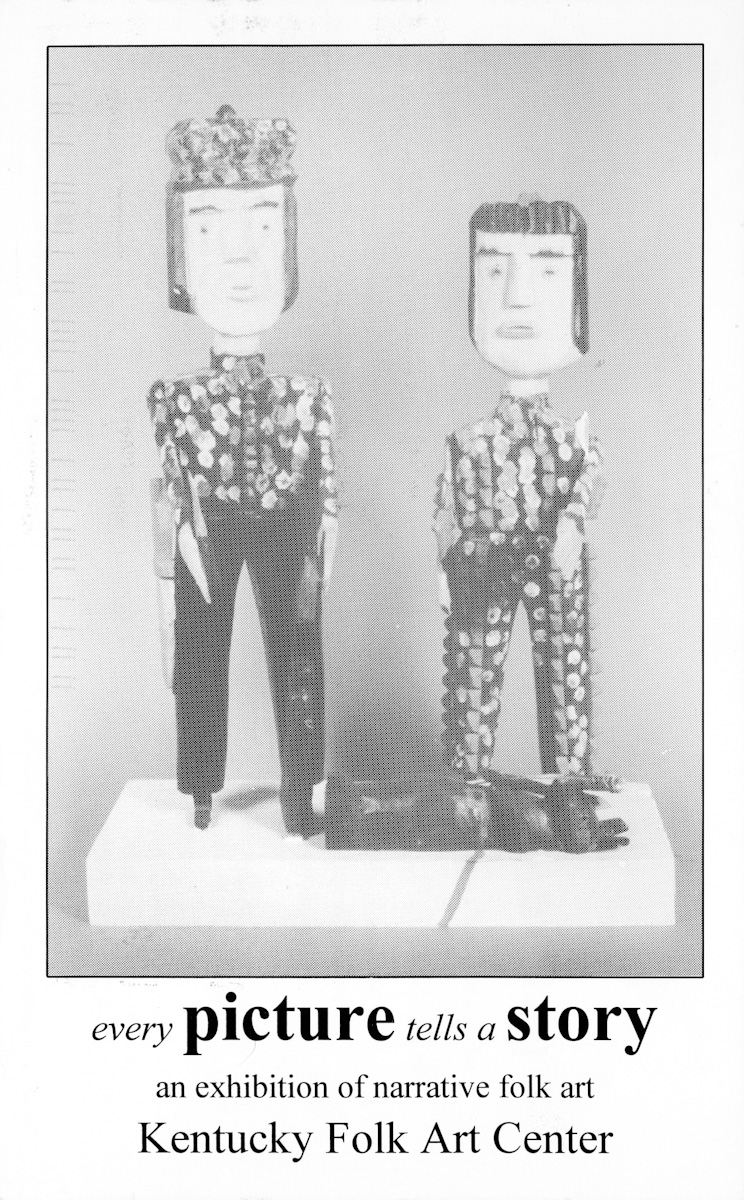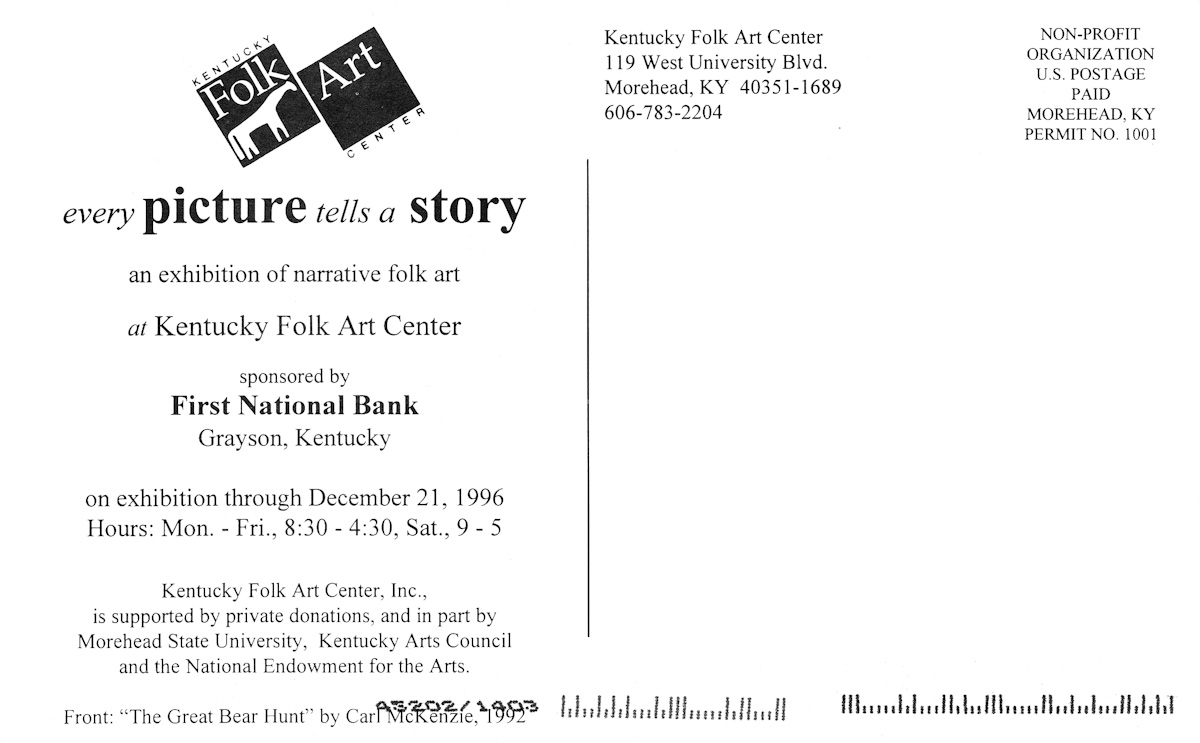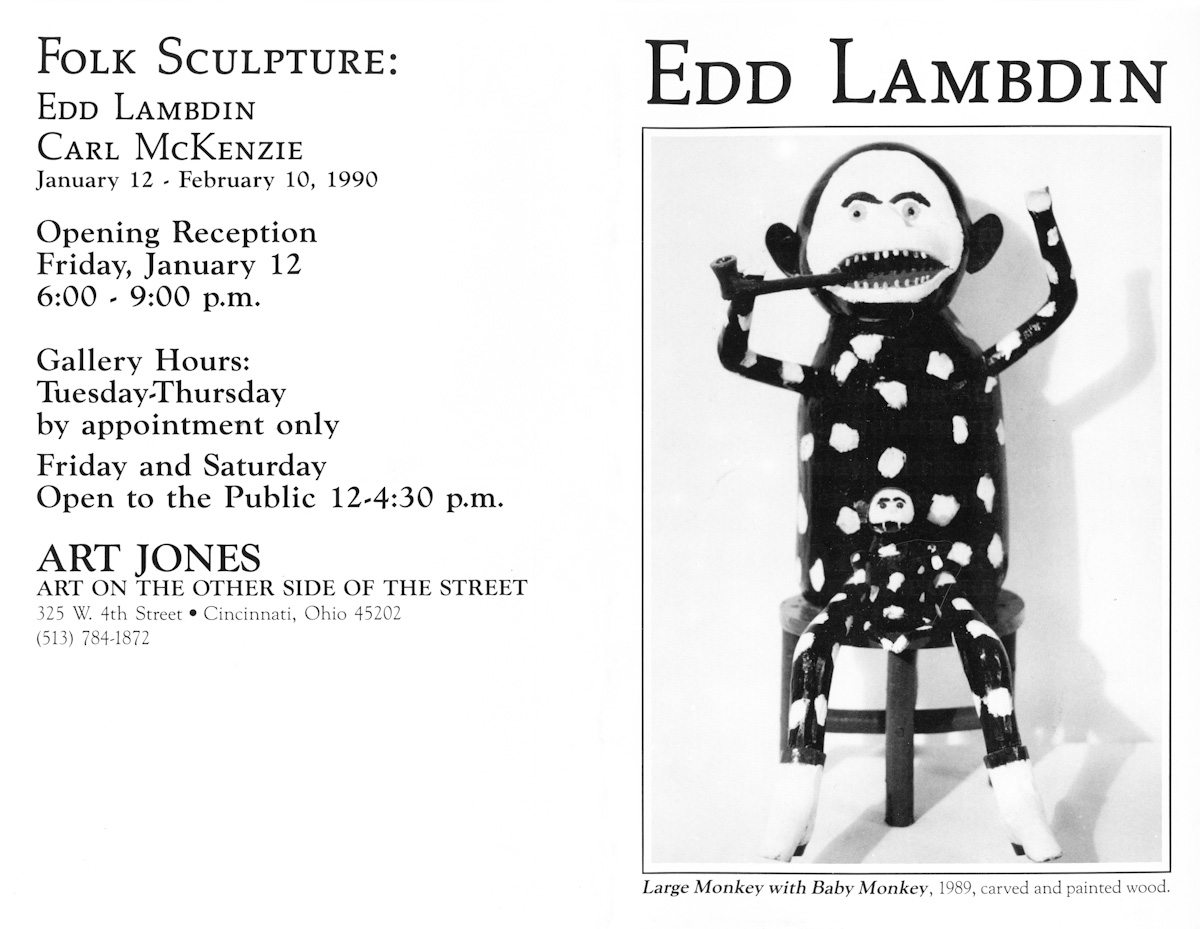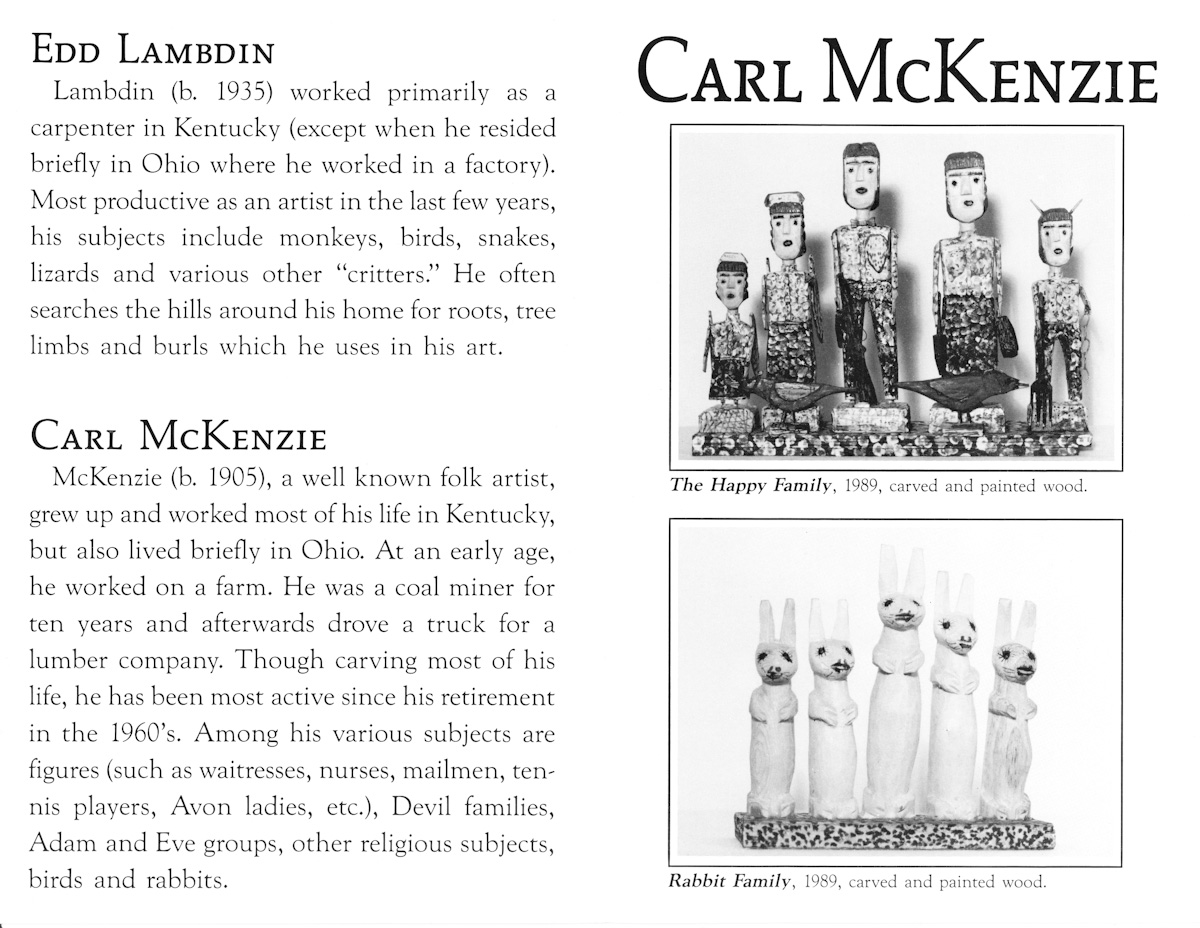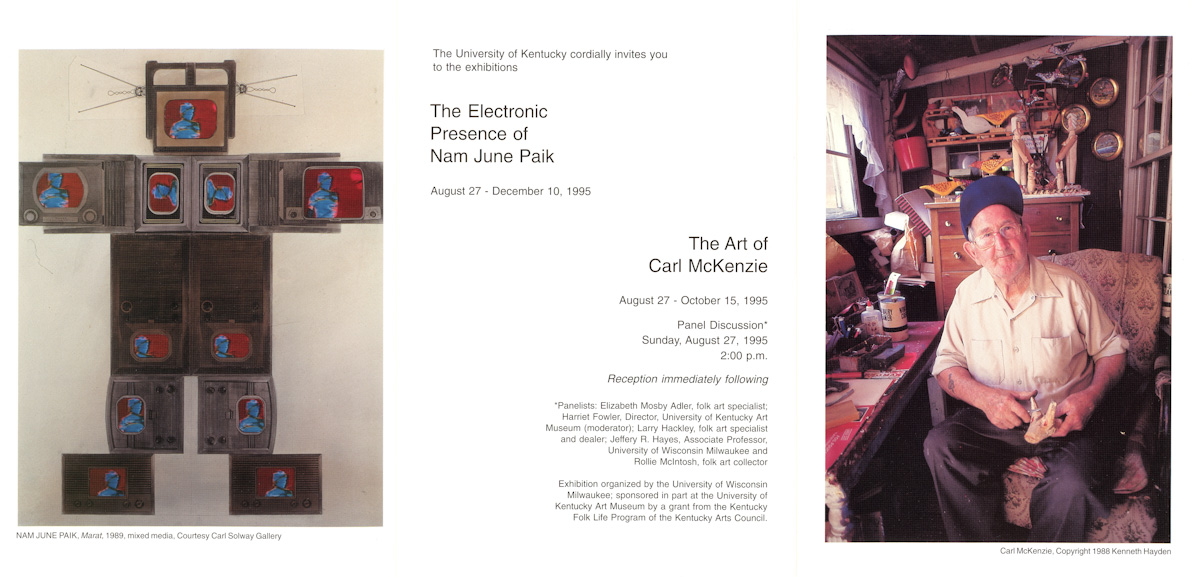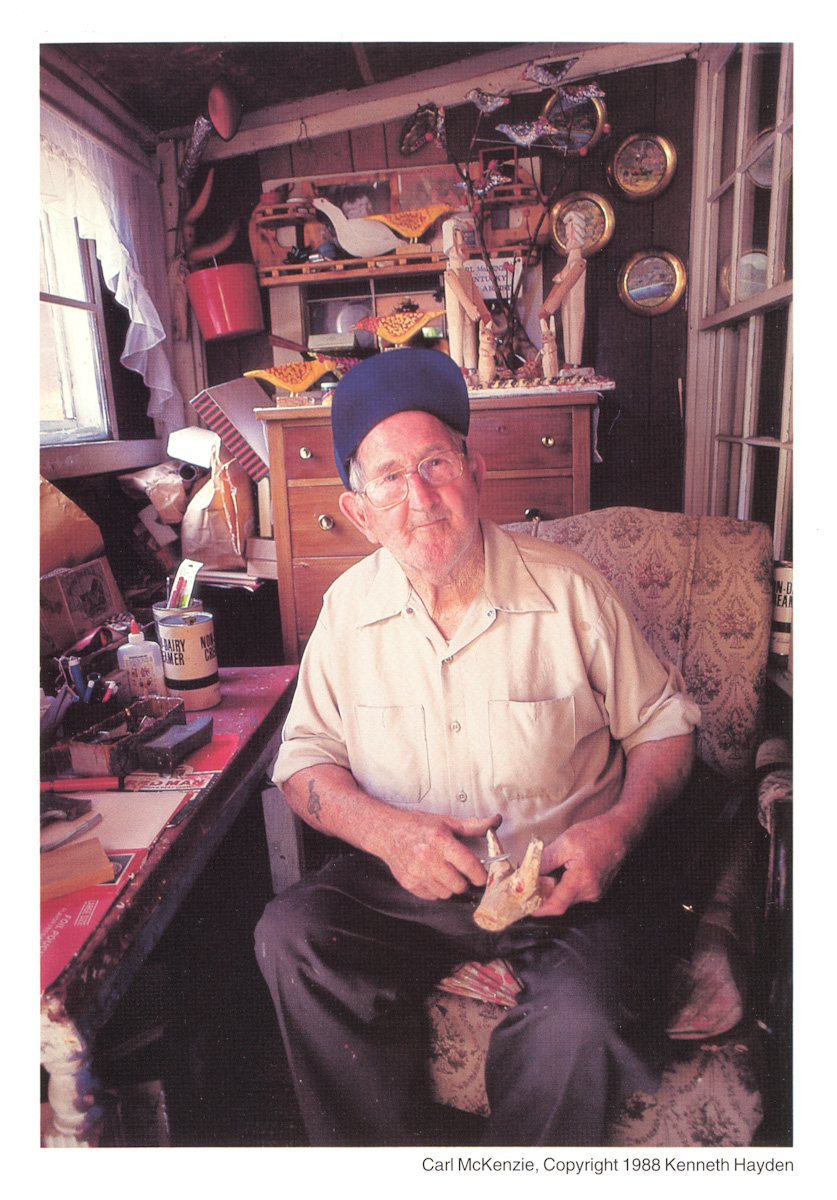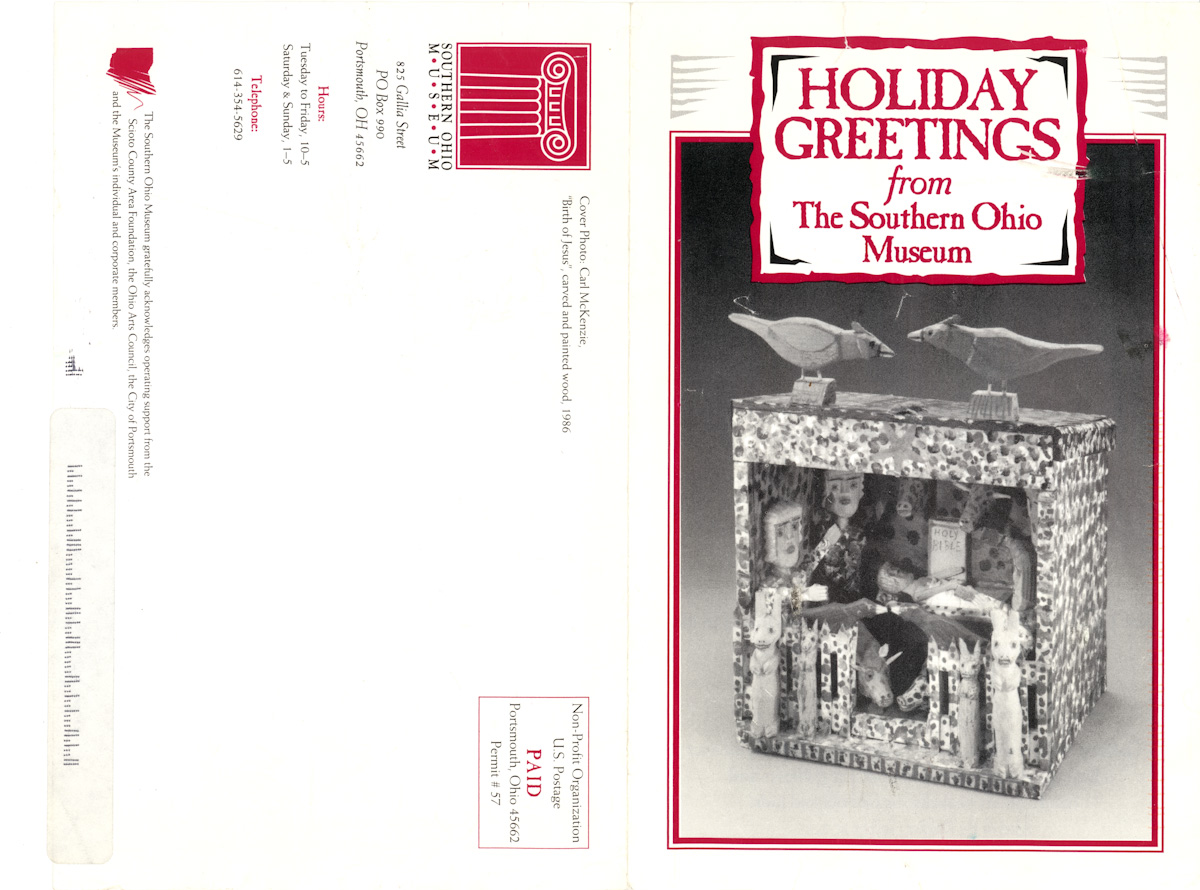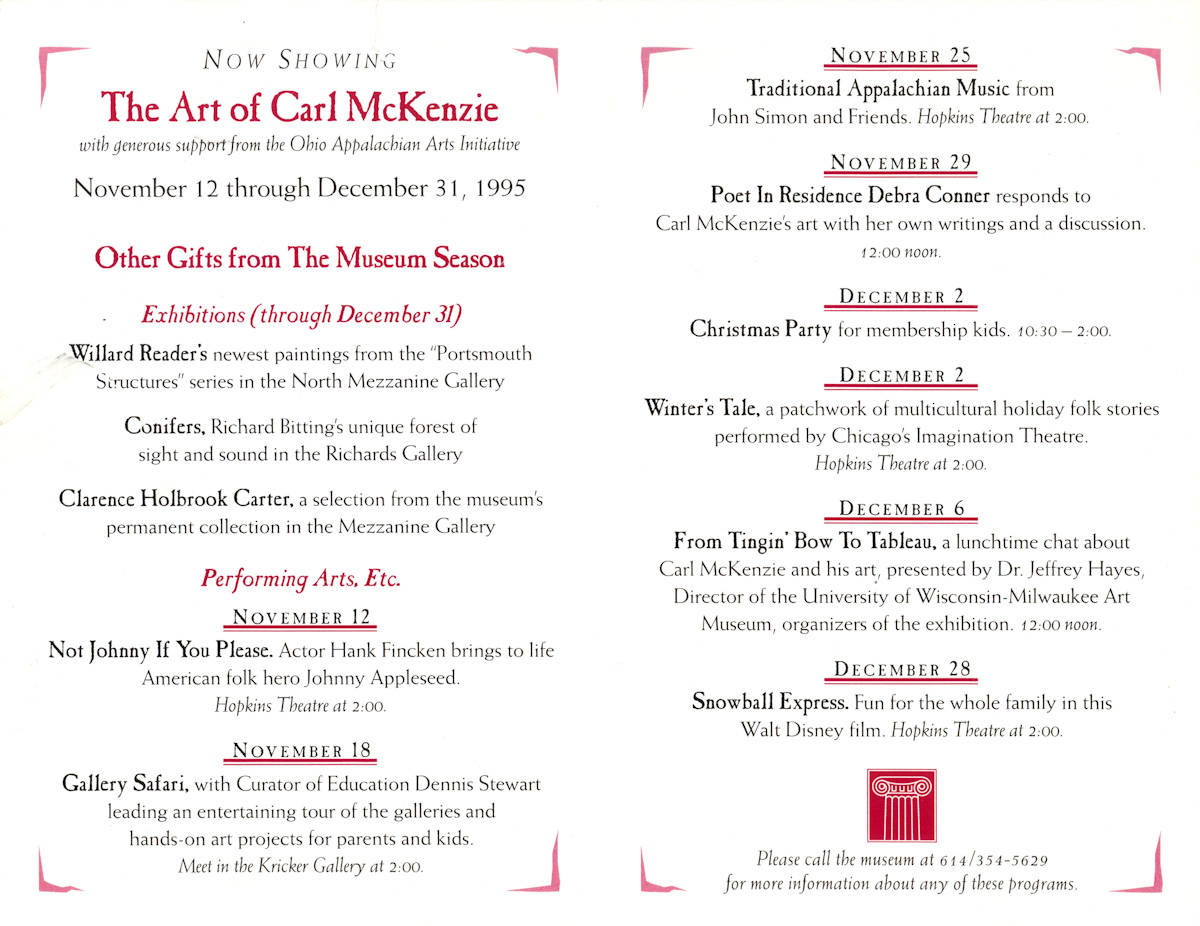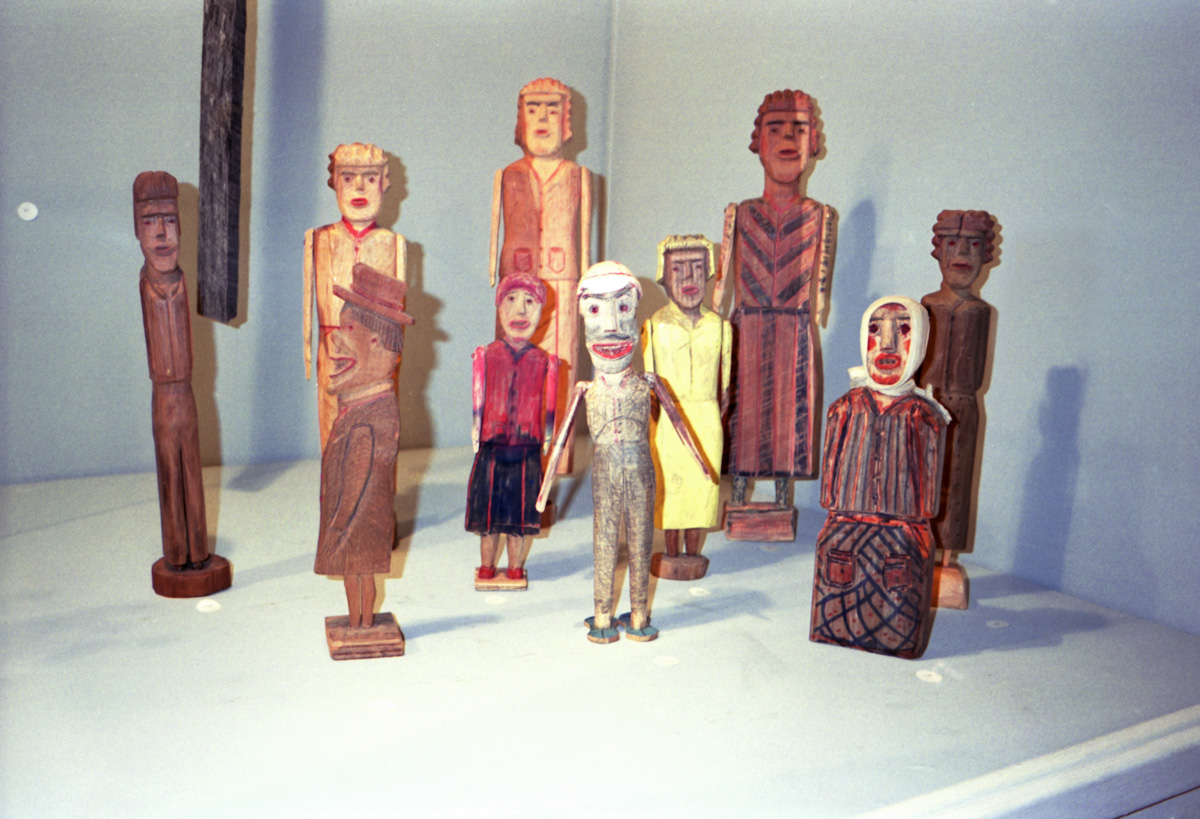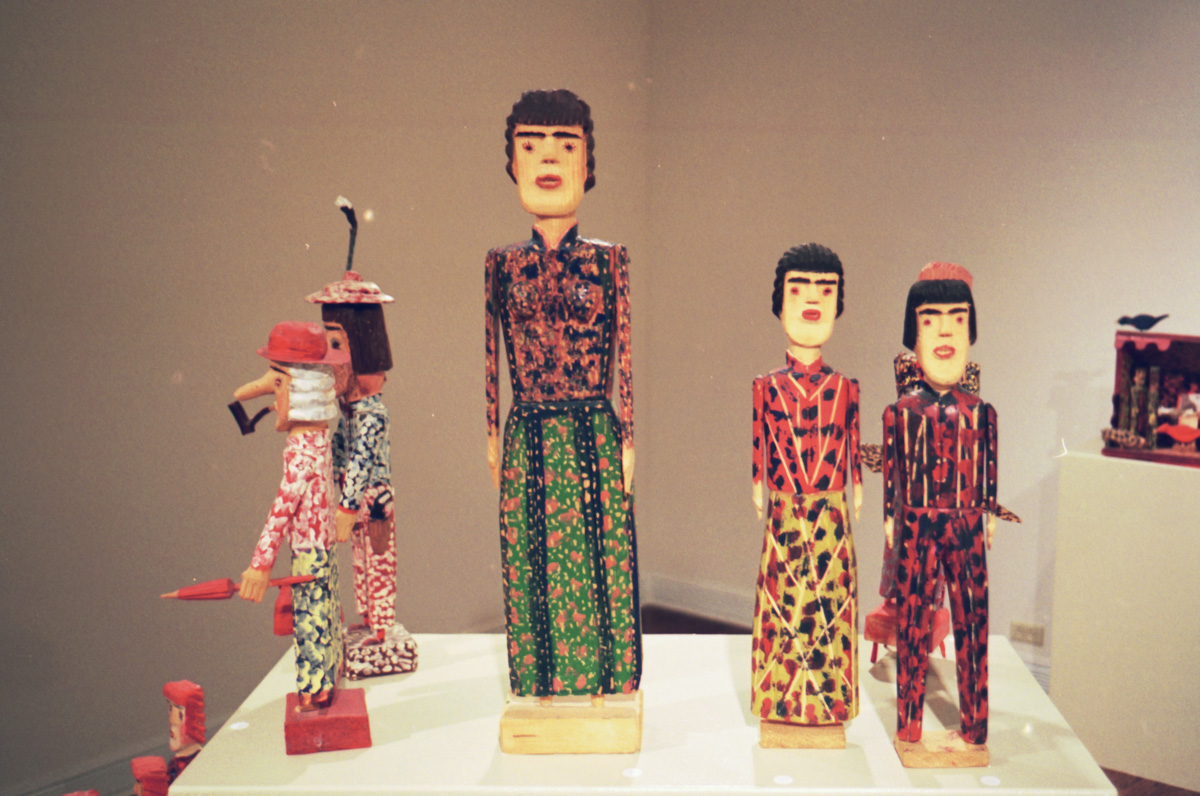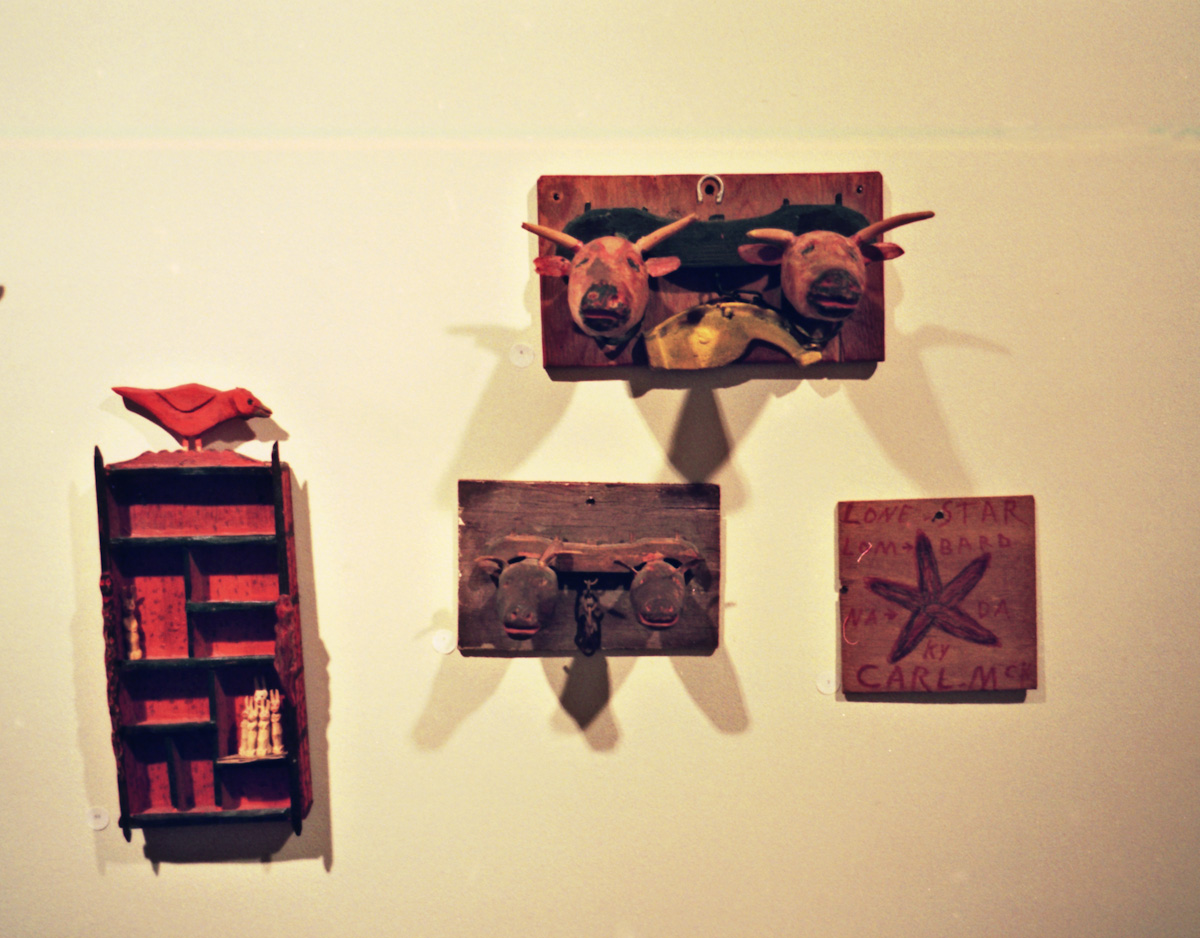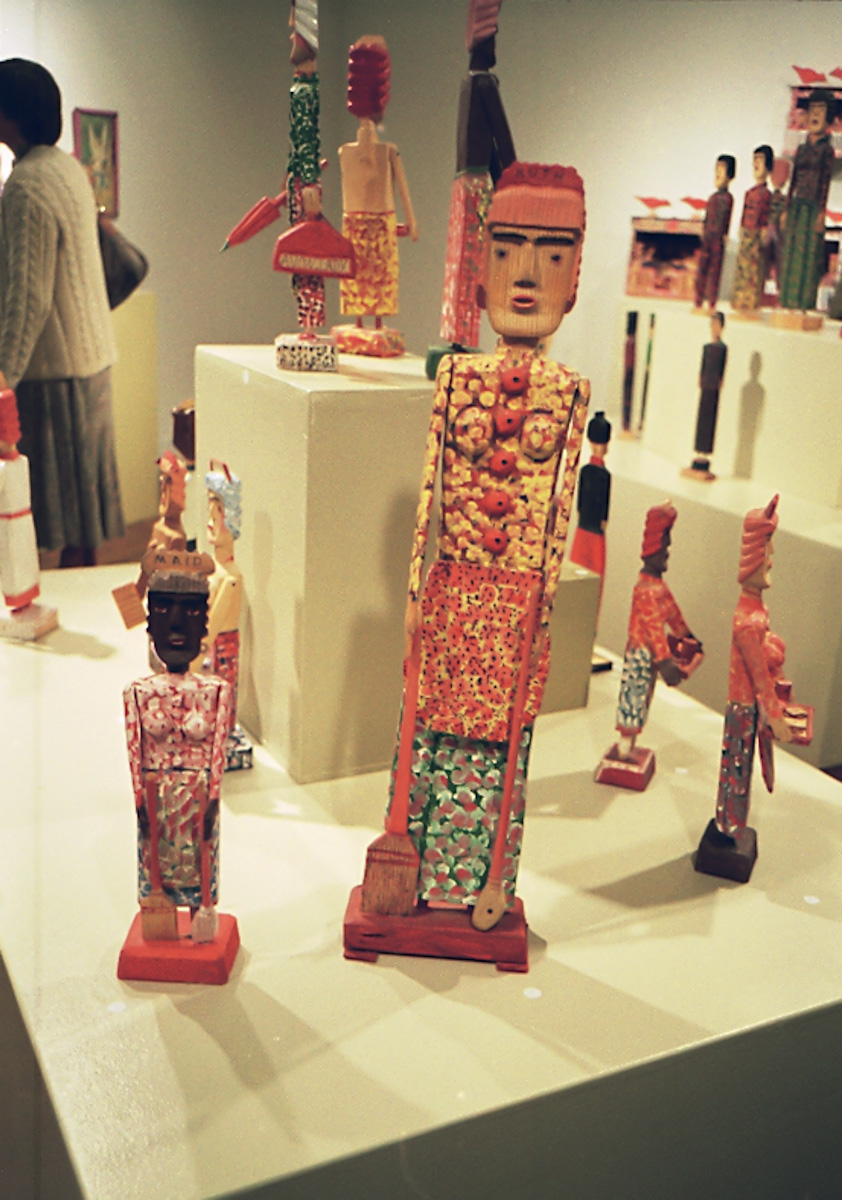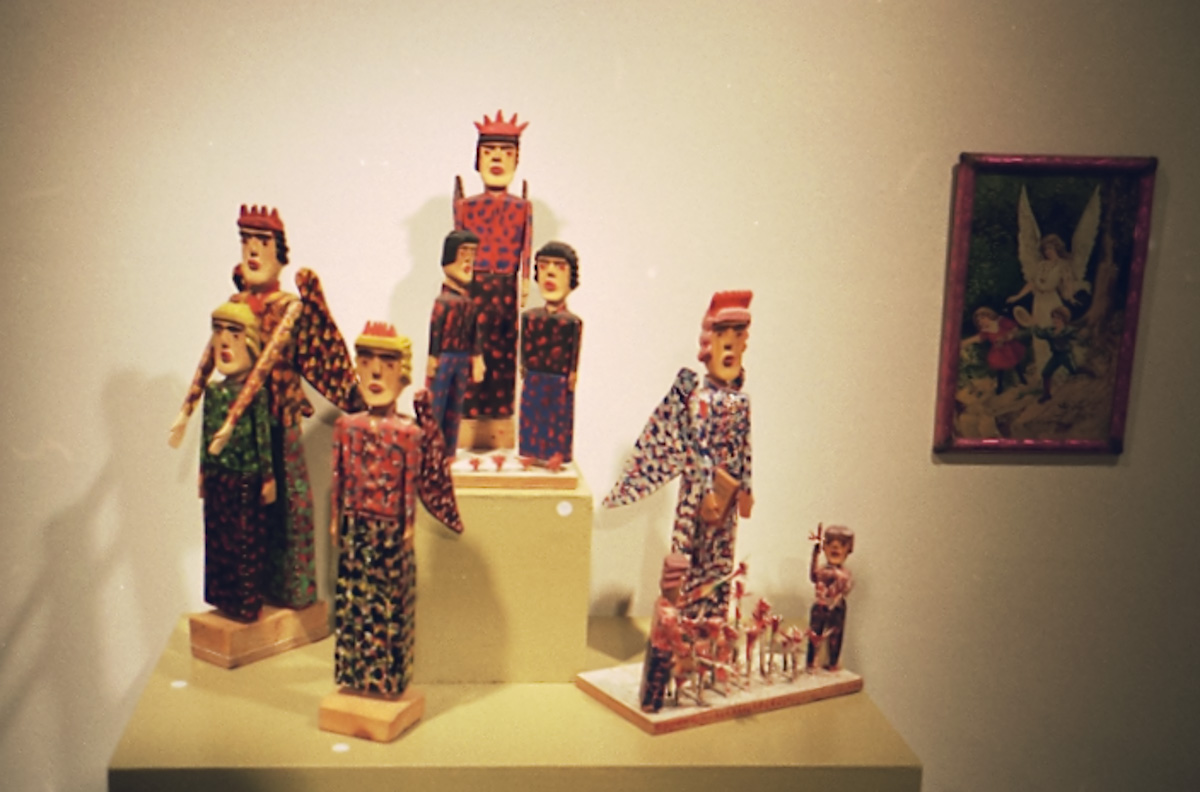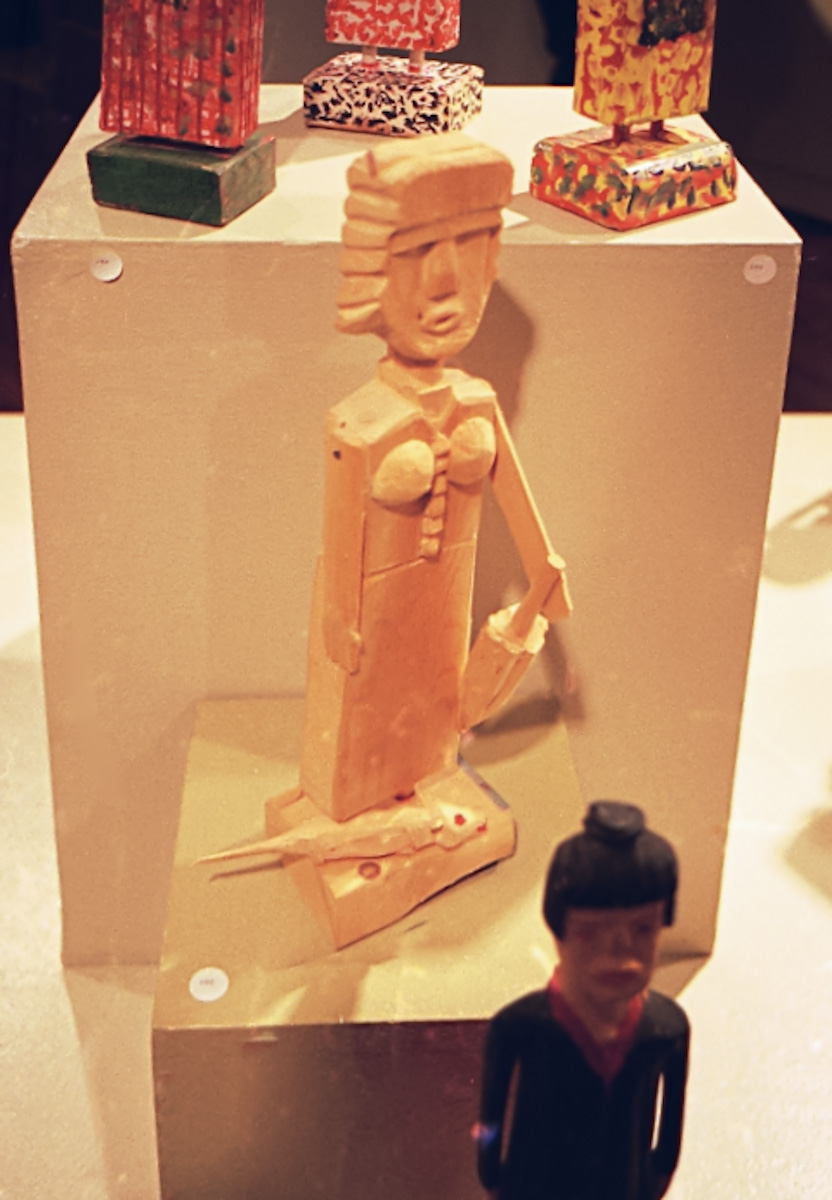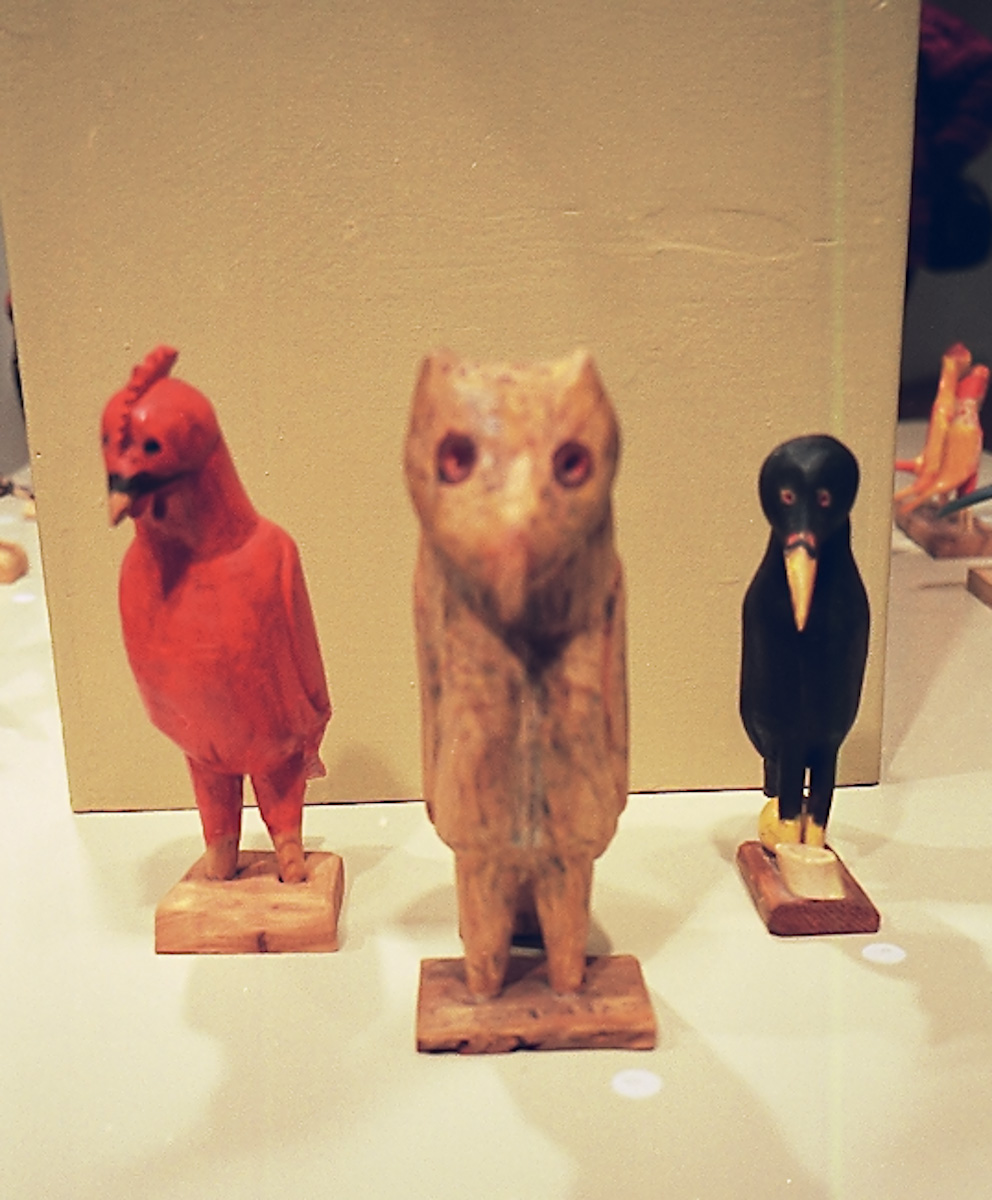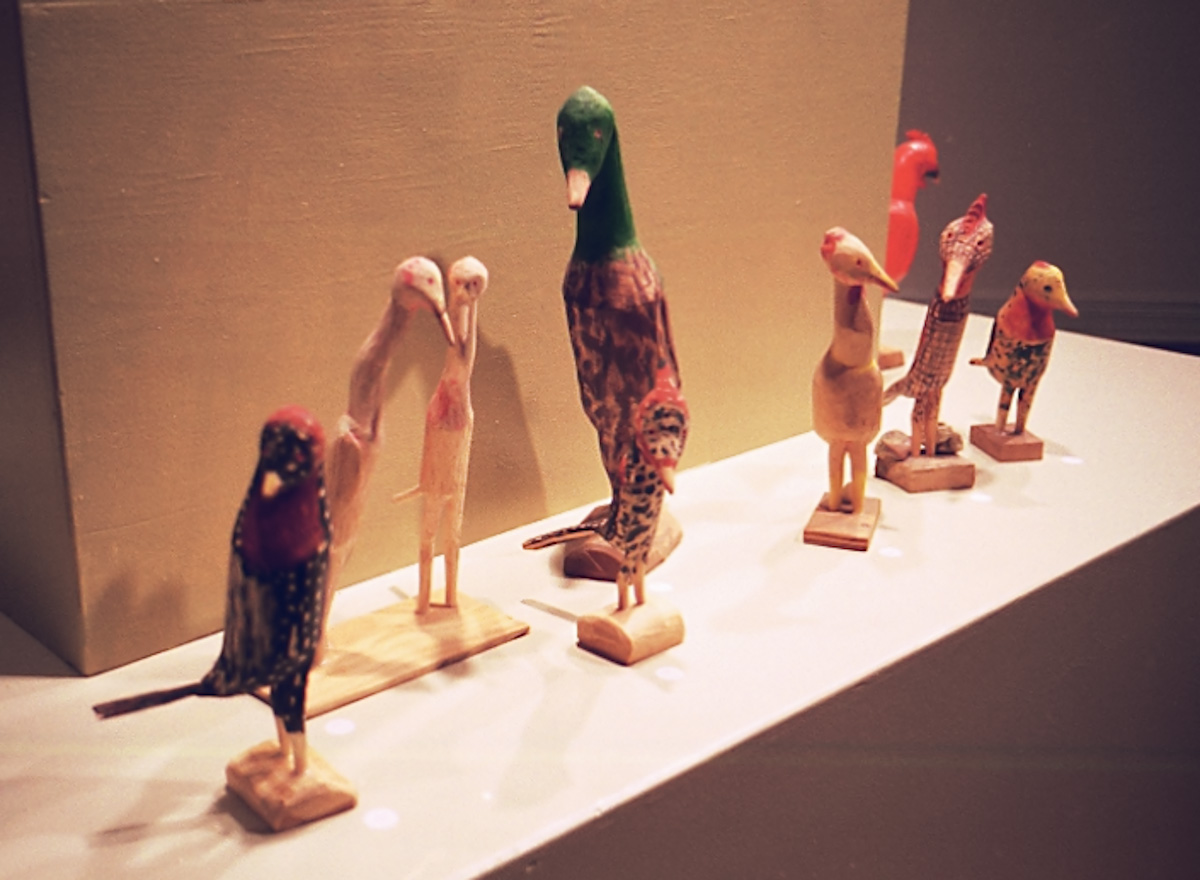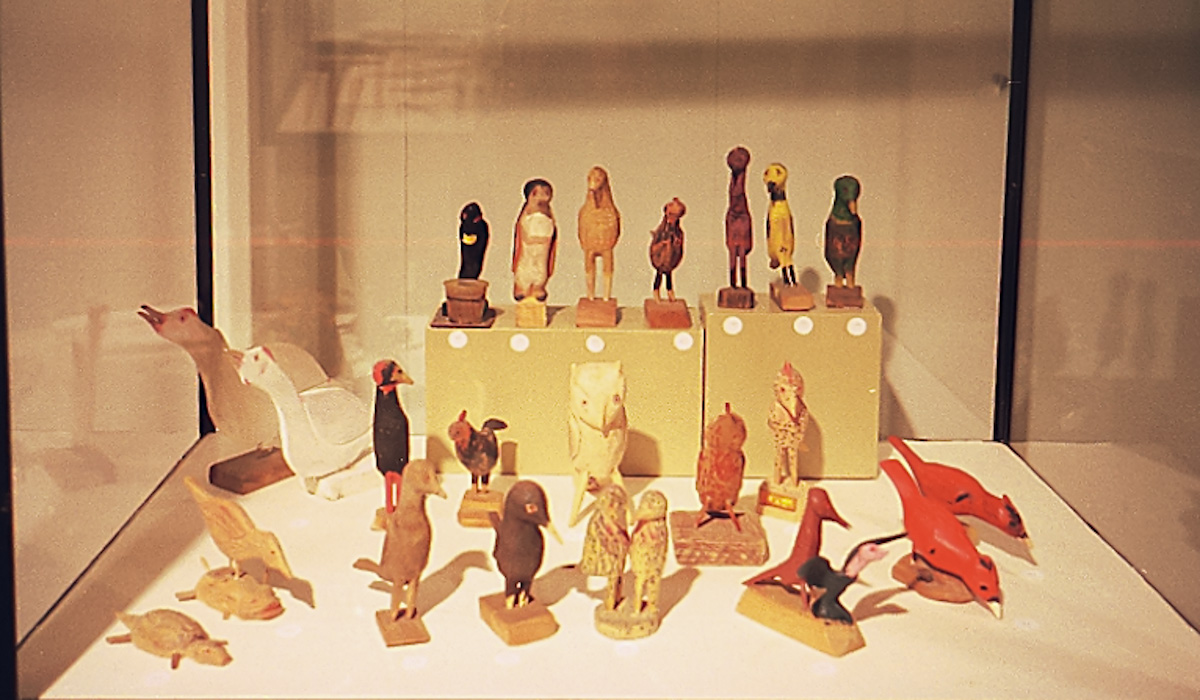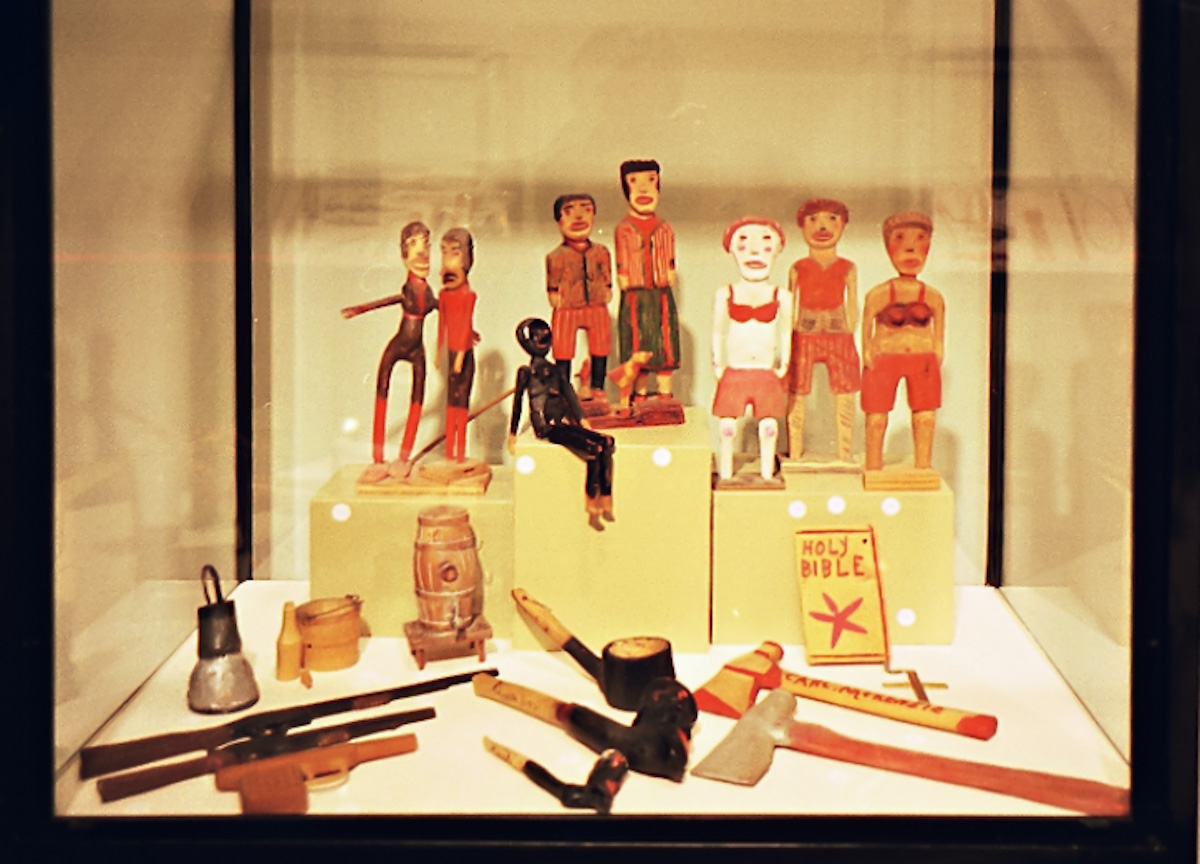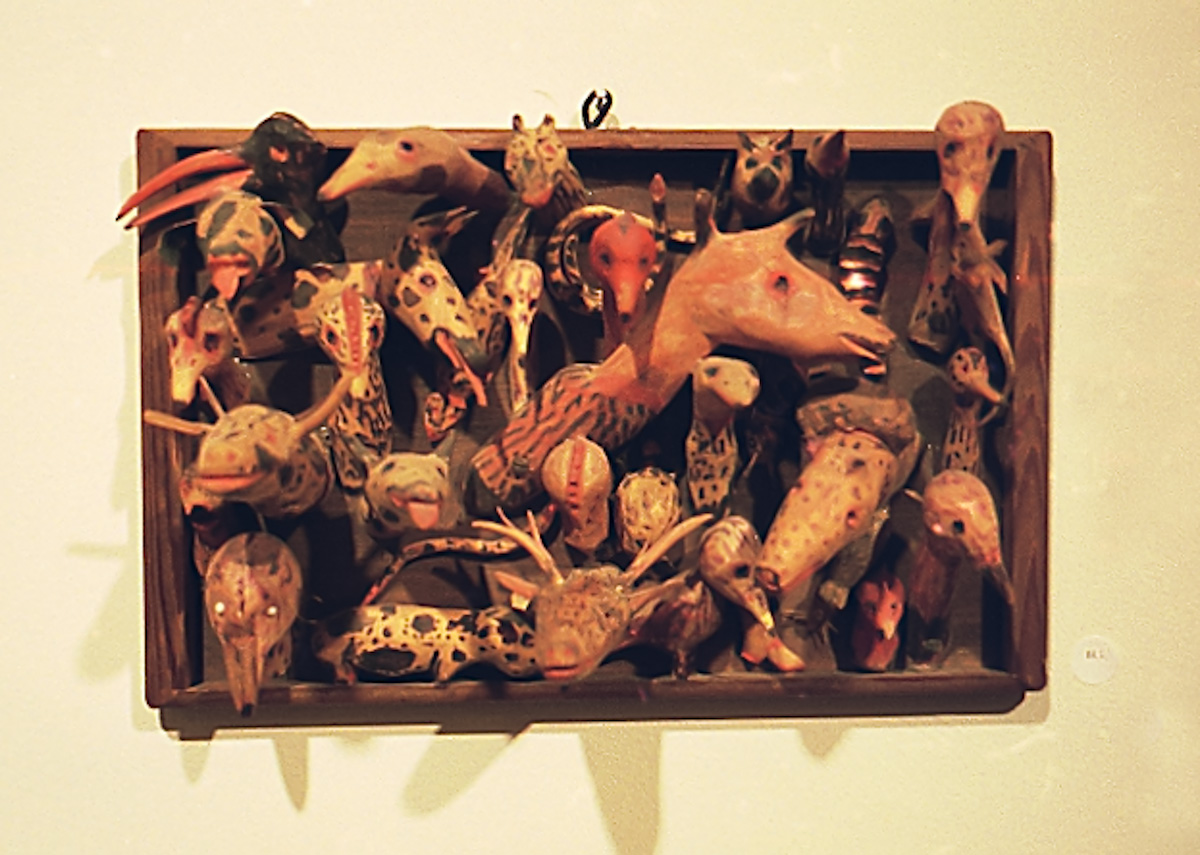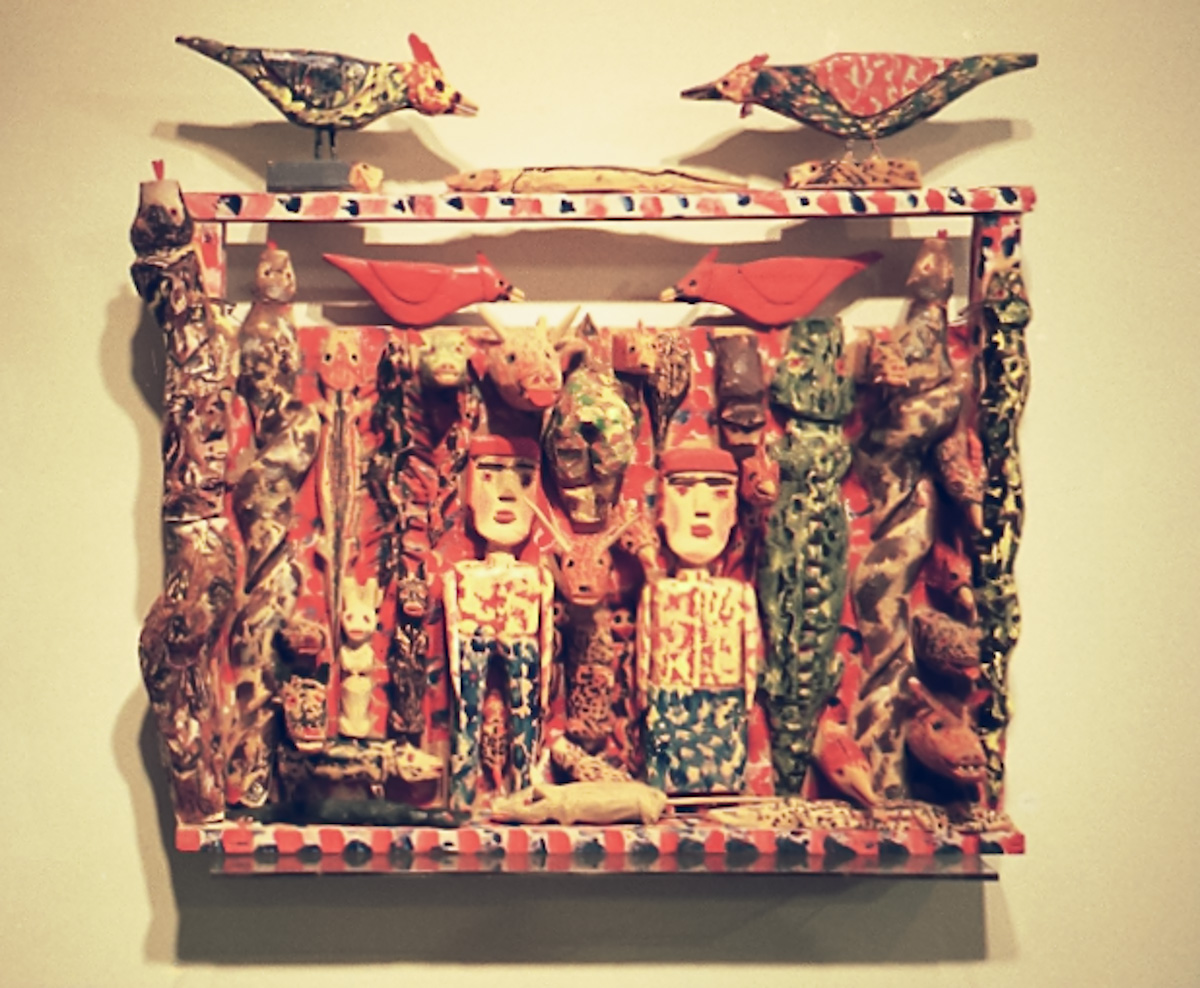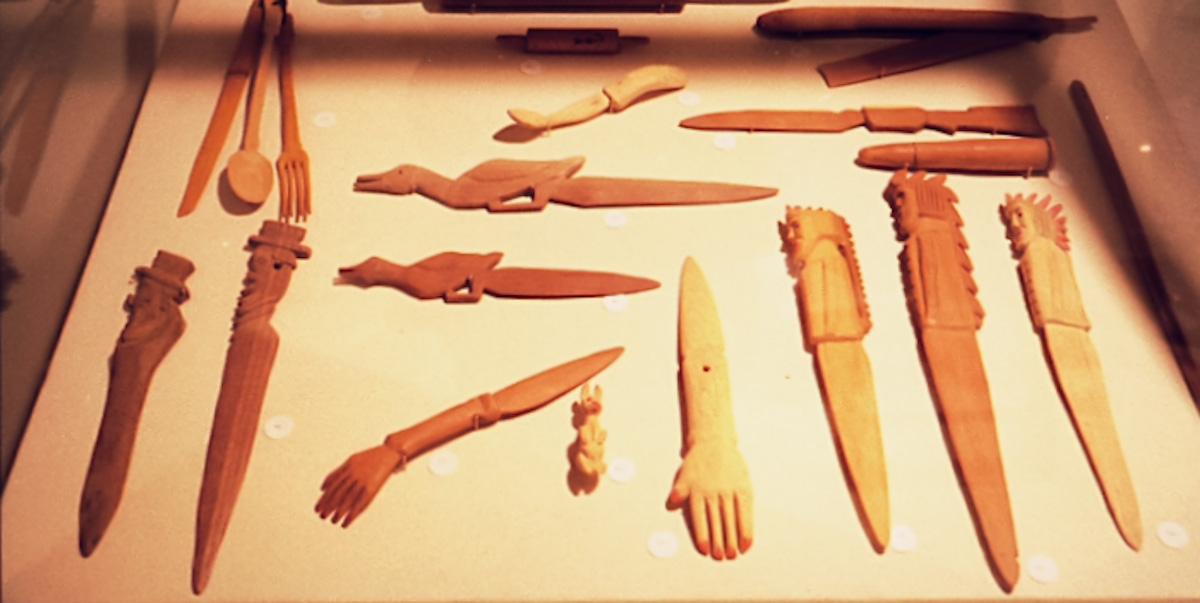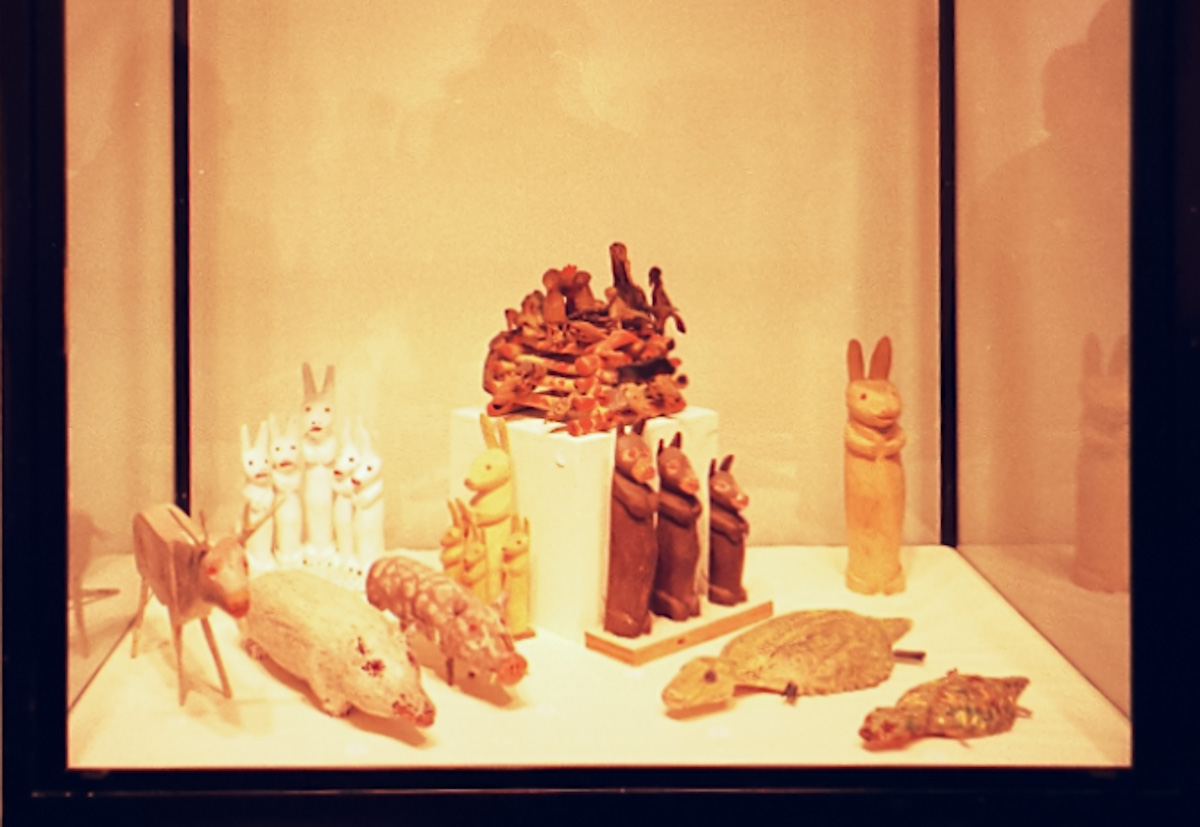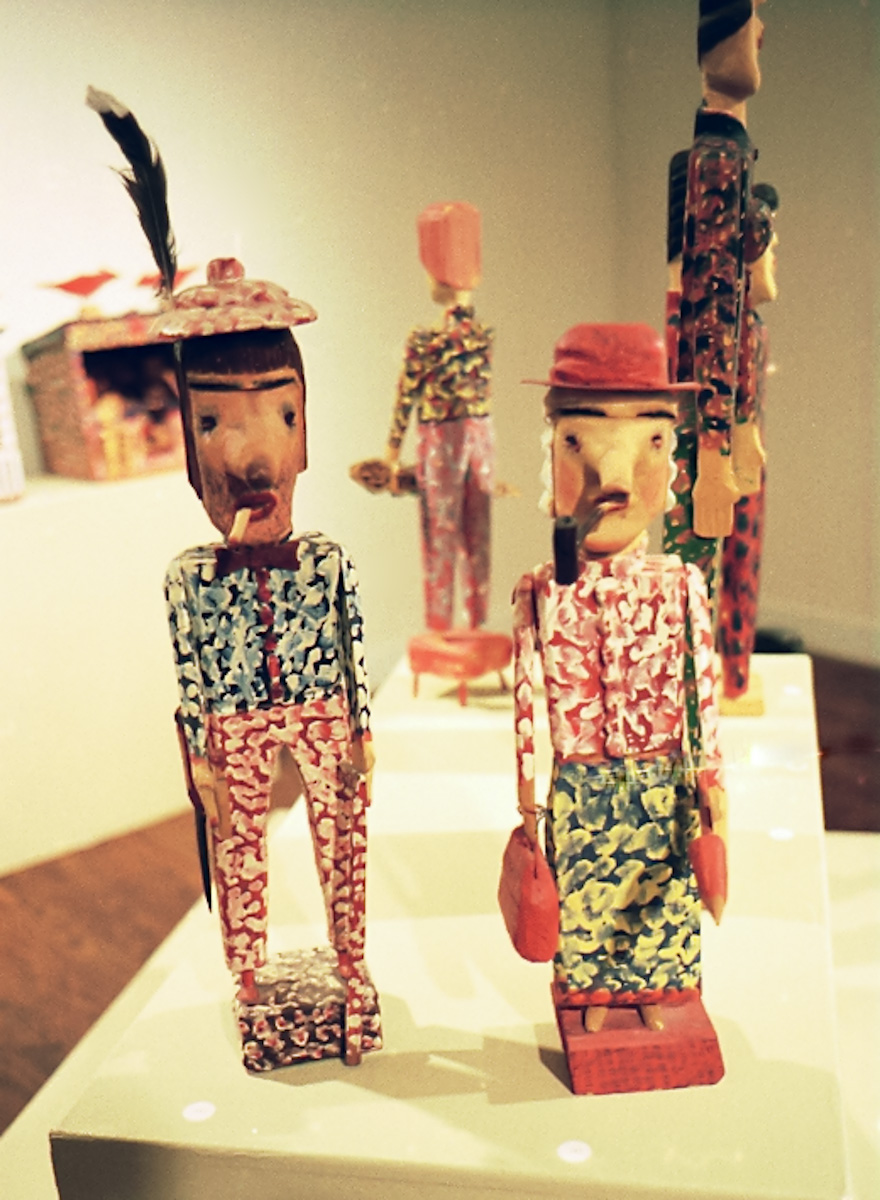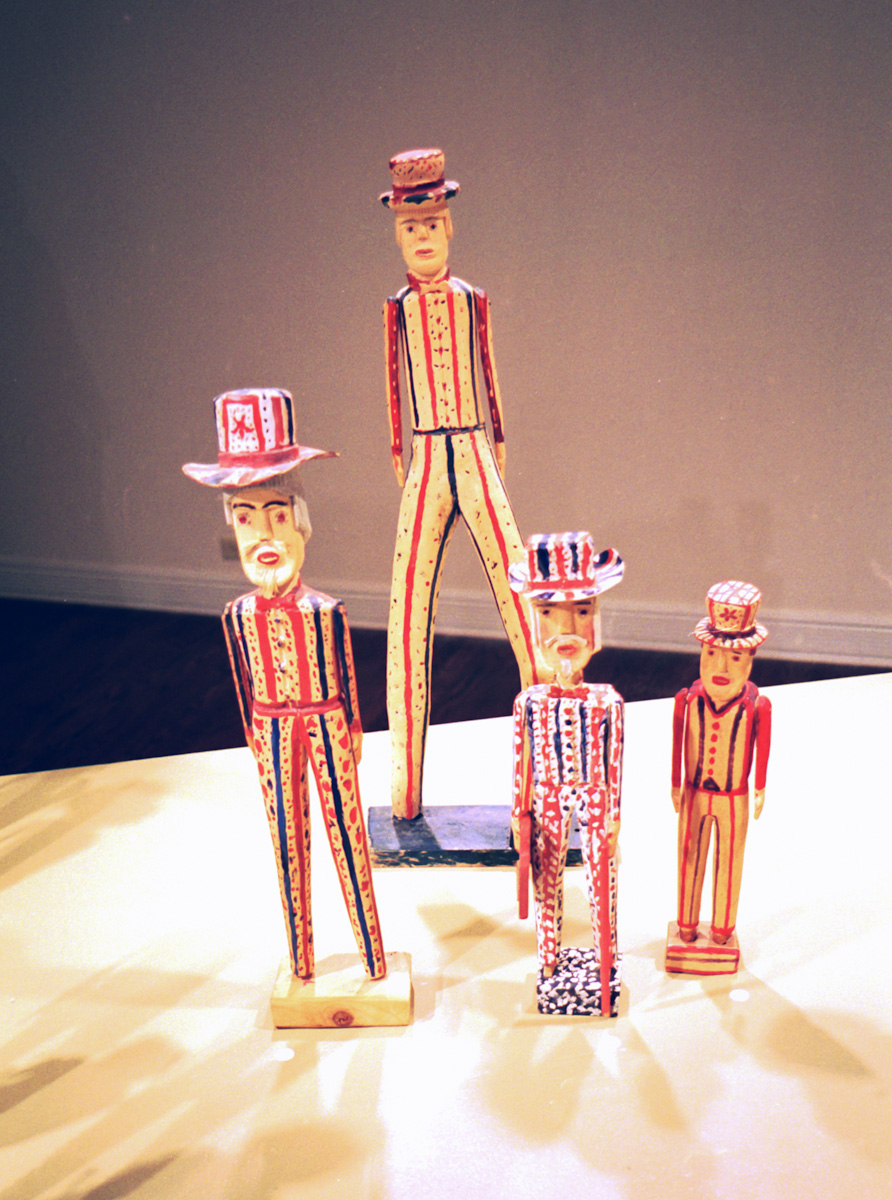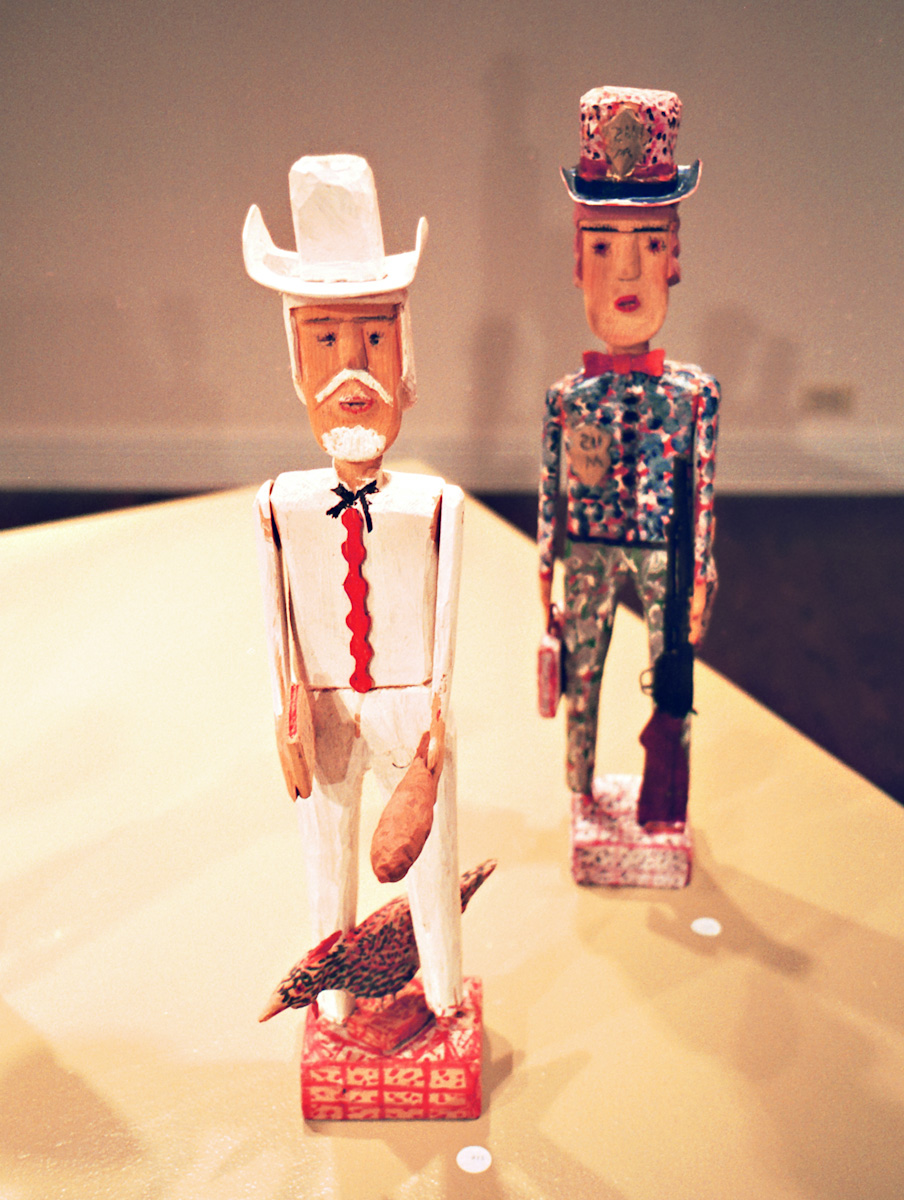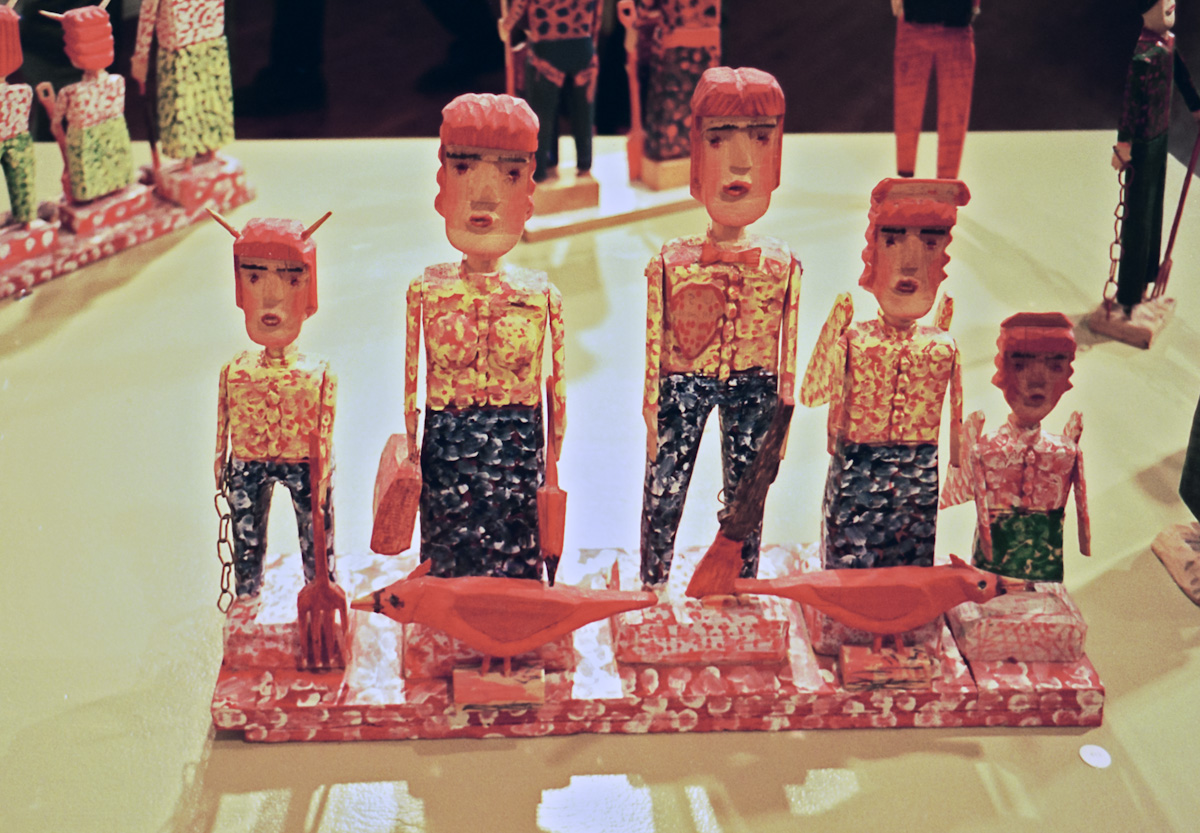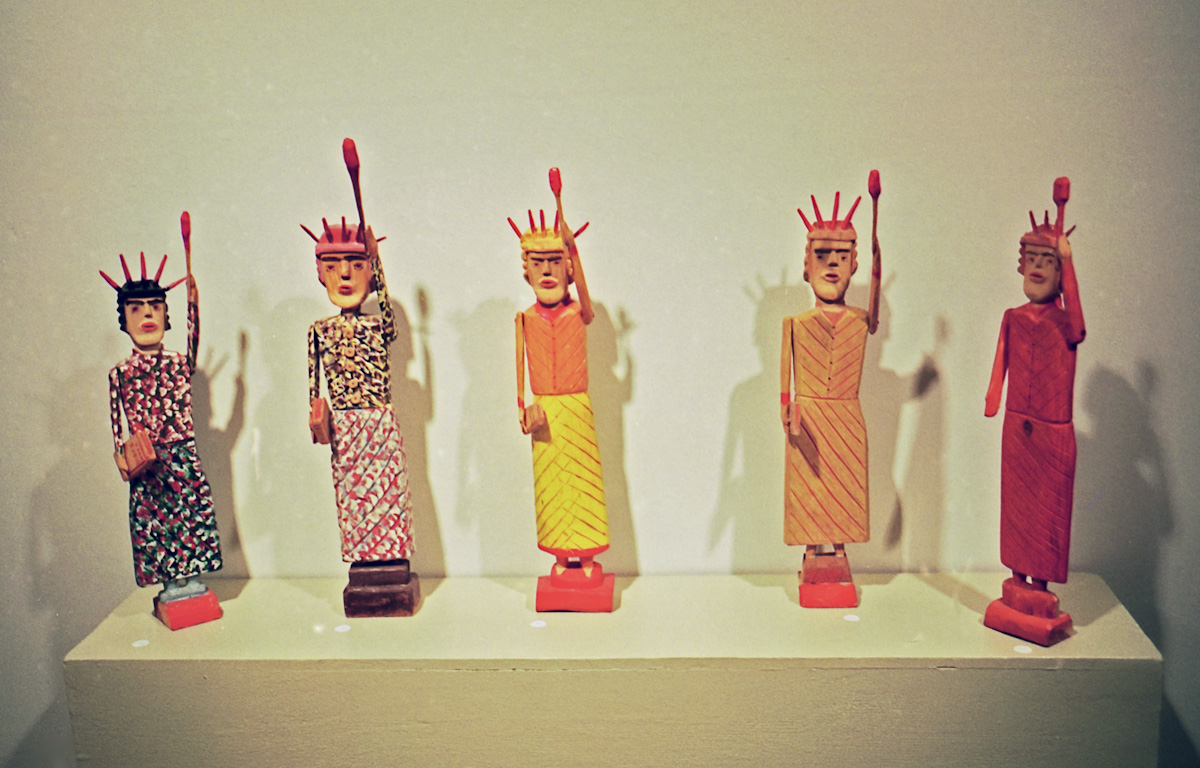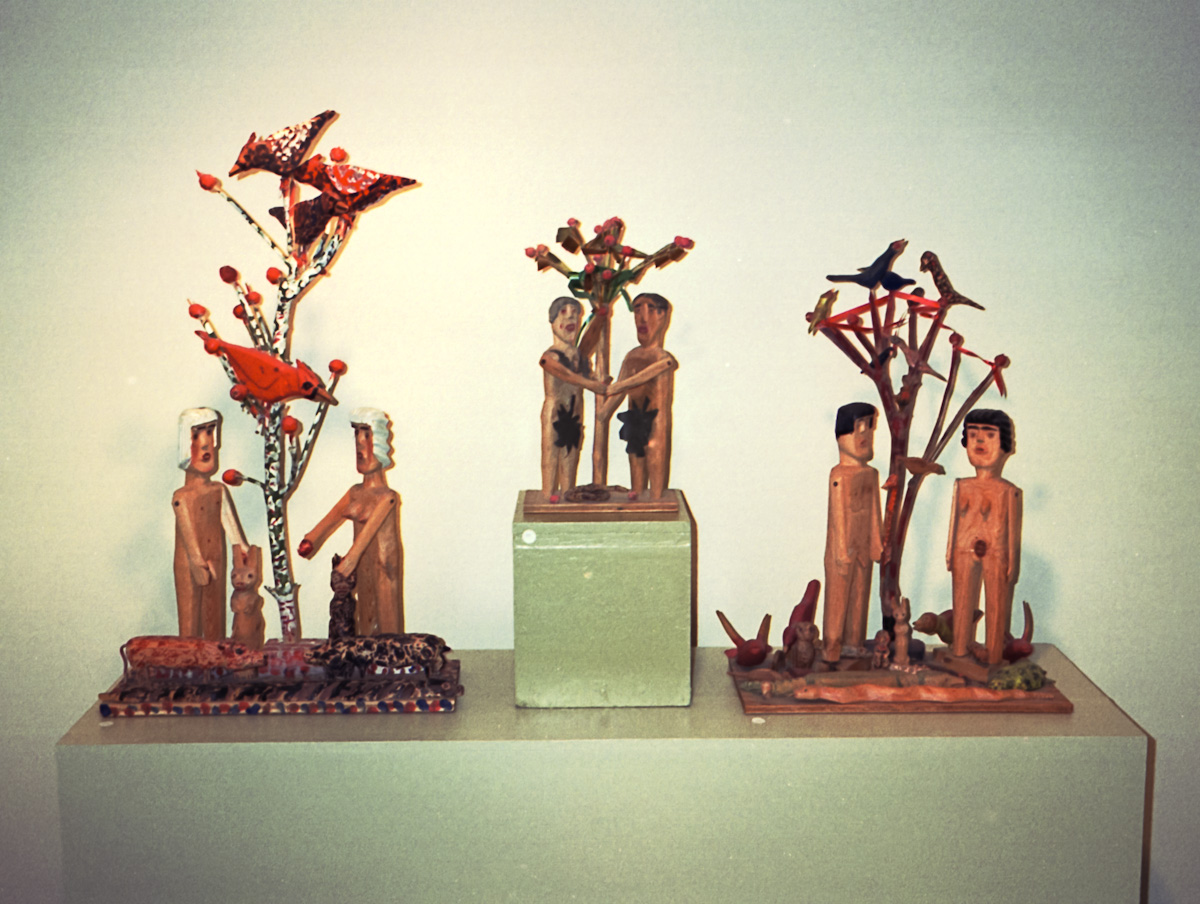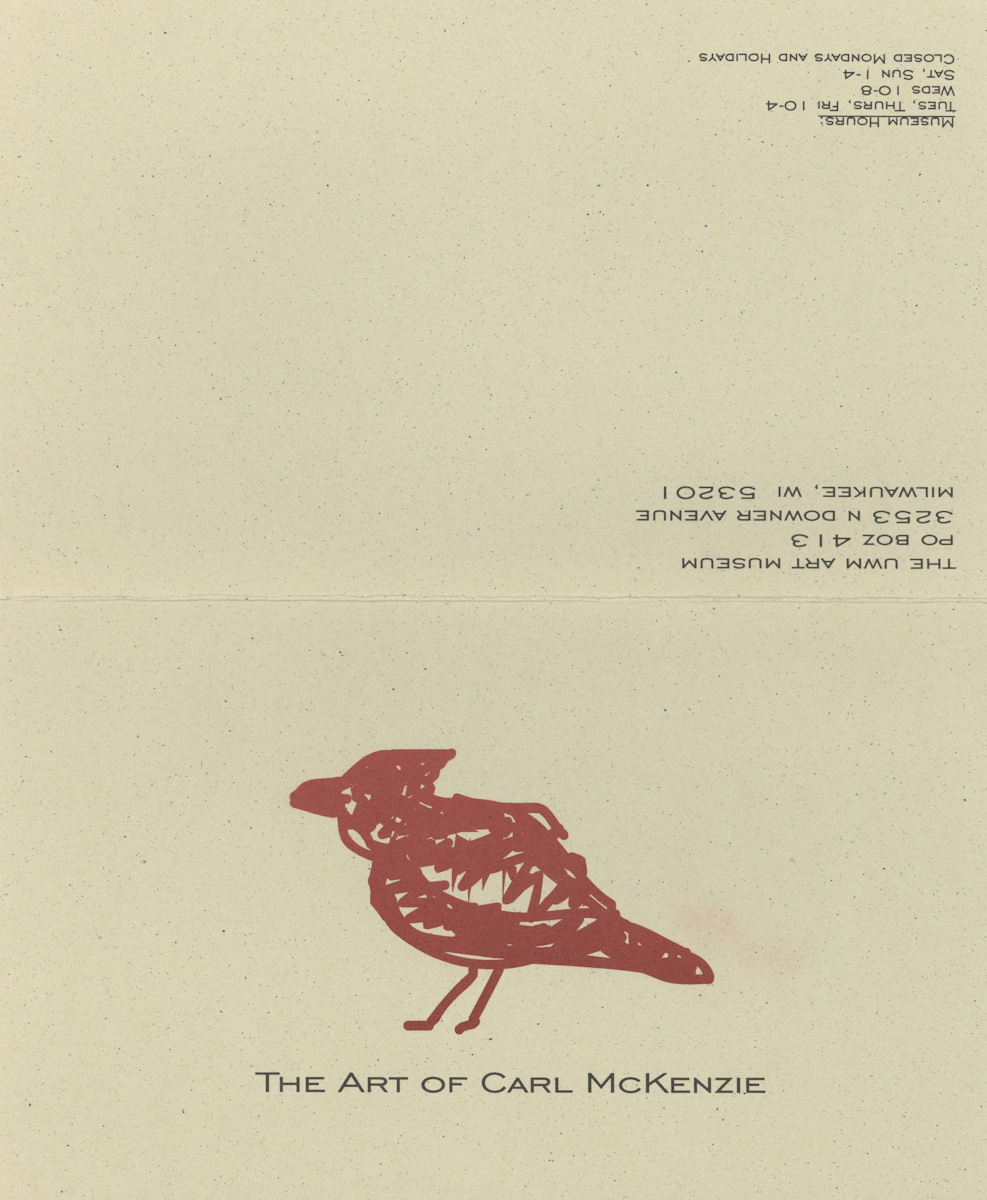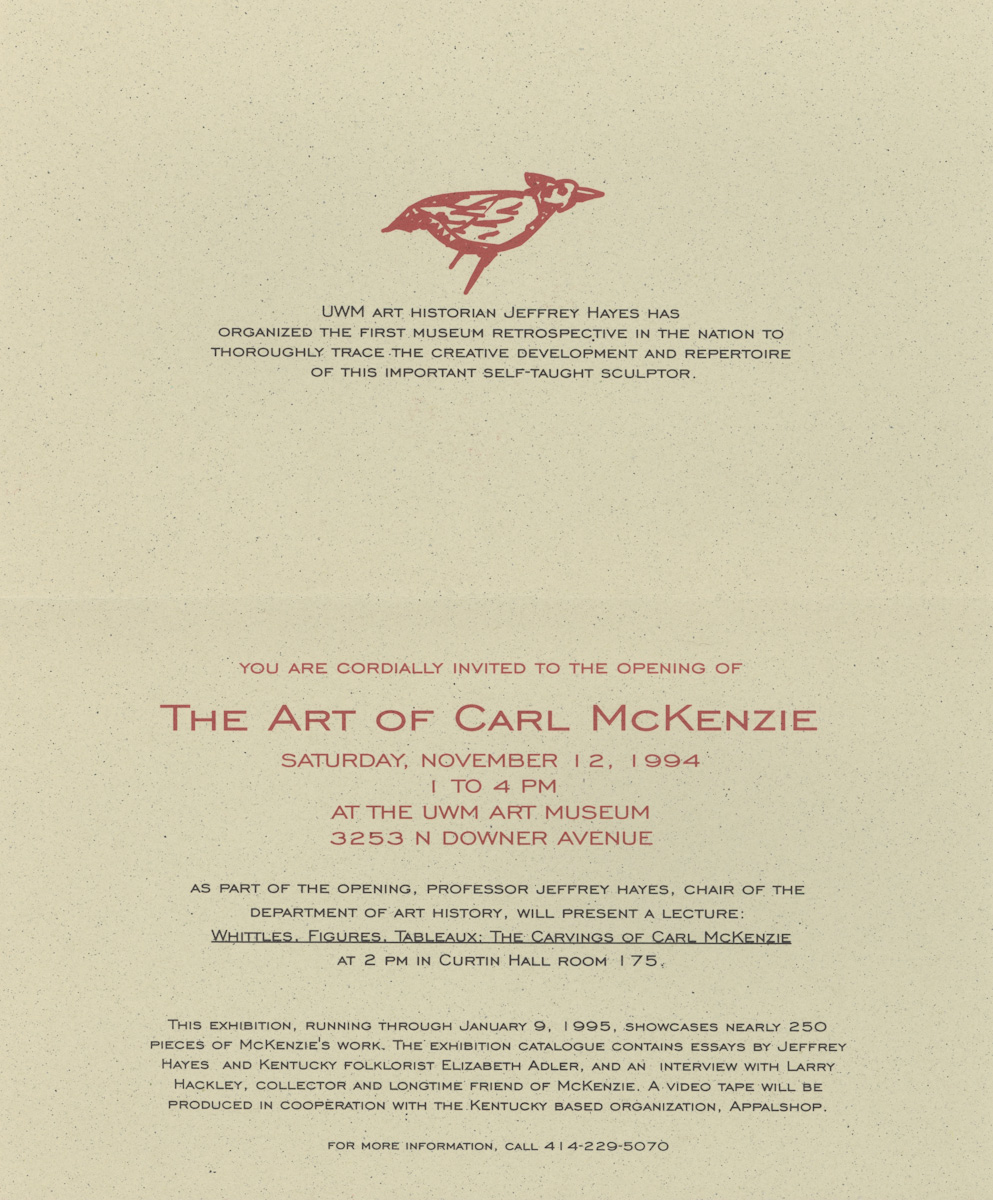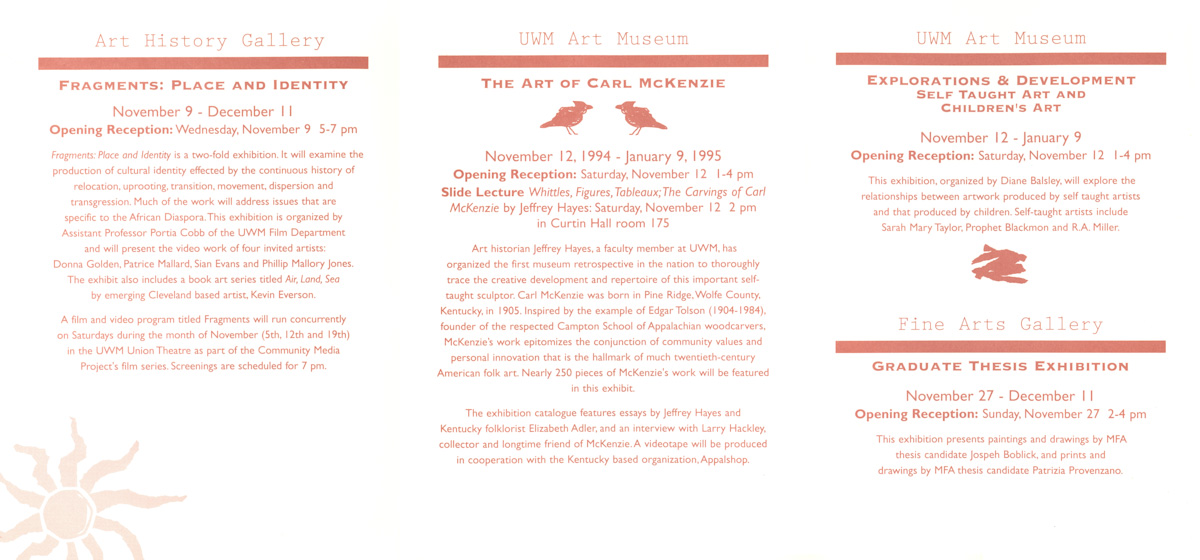Carl McKenzie
Born 1905 (d. 1998) Wolfe County, Kentucky, lived in Nada, Kentucky.We would without hesitation say that Carl McKenize is one of our favorite self-taught artists from Kentucky. Inspired by Edgar Tolson of the Campton school of Appalachian wood carvers, we think his style was uniquely his own and evolved over time. The characters or personalities of his figures translated, whether he was carving Adam & Eve, one of his topless waitresses, a postman, or a nurse. His technique and materials use was resourceful, he showed further innovation with his use of split or feathered twigs as paint brushes.



Our introduction to Carl McKenzies's work, like so many other artists in our collection, was through Arthur Jones and his gallery, Art Jones Gallery. We purchased several of McKenzie's colorful, patterned painted figures, "Sue," a "Hunter," and a "Student" dated 1986, 1986, and 1987, during the period between 1988-1990.
As our interest in self-taught and outsider art expanded regionally, we began to travel in the V.W. camper van on Saturdays and Sundays in hopes of further discoveries. We would investigate antique stores and larger, group malls, as well as galleries. One Saturday in 1990, we attended an antique fair that occurred annually on the quaint streets, yards, and shops of a small town outside of Oxford, Ohio. The fair was held the same weekend in June as a larger event in nearby Richmond, Indiana. This event attracted collectors and sellers from all over the states.

The smaller town's fair was a less focused event and did not charge an entrance fee for lookers. The town was also home to David Good Fine Art & Antiques. David's gallery was not beckoning out to everyman/woman. It was sparsely stocked at first glance. But, not only did David Good have his gallery there but behind the space made available to the constant traffic of the well publicized show, he had created a comfortable setting which served as an extension of the gallery, as well as his living space. It was rich with examples of the finest american antiques, including folk art which spanned centuries. He had paintings, one of a kind objects, sculpture, game boards, decoys, .... All the contents were worthy of museum display.
That day seemed destined. We wandered in to a store front of a shop that was not often open. Among the diverse antiques and collectibles, we discovered what our eyes told us were two early Carl McKenzie figures. They were not displayed together or shall we say displayed at all. We say early, because they appeared stripped down to their simplest, most sublime form. The man was a carved piece with no paint. He had been carved using the two inch side of a two by four piece of lumber. The woman was lovingly carved and both her hair and her dress were painted a warm, homey flaxen shade. She was carved using the four inch width which seemed more successful. We could hardly contain our glee. They were not tagged with prices. We inquired and were told $10 for the man and $15 for the woman because she was painted. The following week we told Arthur Jones about our finds and he promised to speak with the person he felt most authoritative concerning Carl McKenzies' work, aside from the artist himself. That person was Larry Hackley, at the time, we had not yet developed a personal friendship.
The following year, one of us ventured back with an interested companion. Realizing our previous "luck" we perused the same shop. We came back with what we call the "tall Mallard." Based on little experience with anything but McKenzie's figures, instinct directed the purchase. The only experience was again at Art Jones Gallery. We had seen some of his tableaux and wall assemblages including a "Noah's Ark." He did not make conventional boat-like Ark's, but mostly unpainted boards from which the heads or busts of various animals were glued and projected, in addition to Noah. We recall the inclusion of rabbits, turtles, lizards, snakes, and birds, particularly cardinals.


The find was initially met with curious laughter and disbelief concerning the artist or origin, yet confidence remained intact. Finally convinced of authenticity, we returned the next day to discover several smaller unique McKenize birds.

June fourth in 1994, during one of the annual Antique Fairs, we were also honored, not only to be provided access to David Good's personal space and collection, but we were introduced to the authors of "American Folk Art Canes" George H. Meyer and Kay White Meyer, in from Michigan for the weekend. They had on hand their new book which we purchased and they graciously signed. We had just purchased a great Carl McKenzie cane from David Good. The Meyer's dedicated the book to us as "fellow cane collectors- with all best wishes." The cane we purchased was one of McKenzie's "Dolly Parton" canes. We were led to assume it was one from the Meyer's collection. It was of similar quality and expression, perhaps because it had not been represented in the book it was easier to sell?
Soon thereafter, we had the opportunity to show Larry Hackley the entire group in person. He assured us that, yes, they were McKenizie's work. He said, it was more than likely that the pieces were made while McKenzie worked for Armco Steel based in nearby Middletown, Ohio. If not then, his work trucking lumber regionally could provide another plausible explanation. Regardless, our interest in the artist and his work continued. We also purchased "Ruby" the topless waitress dated 1990 and an undated and unsigned rabbit from Larry's gallery in Winchester, Kentucky.
We were later contacted by University of Wisconsin, Department of Art History, Professor Jeffrey Hayes. He was seeking suitable work for a traveling exhibit he was curating for he University of Wisconsin Milwaukee Art Museum to open later that year. We were honored to have McKenizie's thin man, the flaxen haired woman, and all of our birds represented in the retrospective titled: The Art of Carl McKenzie. We were told the exhibit would be out approximately two years. We realized the importance of sharing pieces representative of both his very early and late career.

The show opened appropriately in Milwaukee in November 1994. We traveled first to visit friends and fellow collectors Amos Miller and Sharon Lombard at their home in Westby, Wisconsin. We then met friends Maggie and Richard Wenstrup in Milwaukee to attend lectures, view the McKenzie show, and take part in a Collectors tour of the collection of Julie and Michael Hall that had recently been bequeathed to the Milwaukee Museum of Art.
The McKenize show consisted of approximately 250 pieces of his work which spanned decades. It was paired with a catalogue with essay by Jeffrey Hayes, folklorist Elizabeth Mosby Adler, and other words from McKenize's longtime friend and folk art scholar Larry Hackley. It was phenomenal to see the thoroughly curated showcase of the artist's creative development.
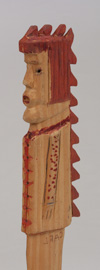
Maggie and Richard Wenstrup and we then traveled to Chicago to the home of collector Richard Edgeworth. Like the Wenstrup's and us, his collection had also been picked for the McKenzie retrospective. His apartment in a high rise near the lake was layered, stacked, packed, and hung with folk art from important artists too numerous to list. One figural artist we had always coveted was William Dawson. Richard sold us some utilitarian pieces by McKenzie that he had made years earlier, an indian letter opener and a "tea towel" holder. It was two connected hands, the wood was beautifully carved and had a beautiful patina.
The show traveled next to University of Kentucky Art Museum in Lexington, Kentucky for an August-October showing. Carl McKenzie, who was in a wheel chair was accompanied by Carolyn Hall and her husband. It was well received as work by a Kentucky native son. The show's opening was uniquely paired with the exhibit titled the "Electronic Art of Nam June Paik." We recall seeing and speaking briefly with Carl Solway, Paik's representative, Carl Solway Gallery's namesake and Cincinnati resident. It was a juxtaposition that worked.
The show then traveled to the Riffe Gallery in Columbus, Ohio. Carl McKenzie's work was paired with Ohio self-taught sculptor, Adam Brandau. The exhibit was titled "In Their Own Time" the Art of Carl McKenzie and Adam Brandau. It too was well curated and displayed. The focal piece of Brandau's tin sculptural work was surely the piece from the Carl Hammer Gallery at over 12 feet tall.

There have been other shows which honor the significance of Carl McKenzie's work, some regional and remembered, "Every Picture Tells a Story," December 1996 at the Kentucky Folk Art Center in Morehead, Kentucky. Another, the "Art of Carl McKenzie" late in 1995 at the Southern Ohio Museum in Portsmouth, Ohio. We are again reminded of our dumb luck.


